Thursday, 6 July
We made it, we reached Portugal!
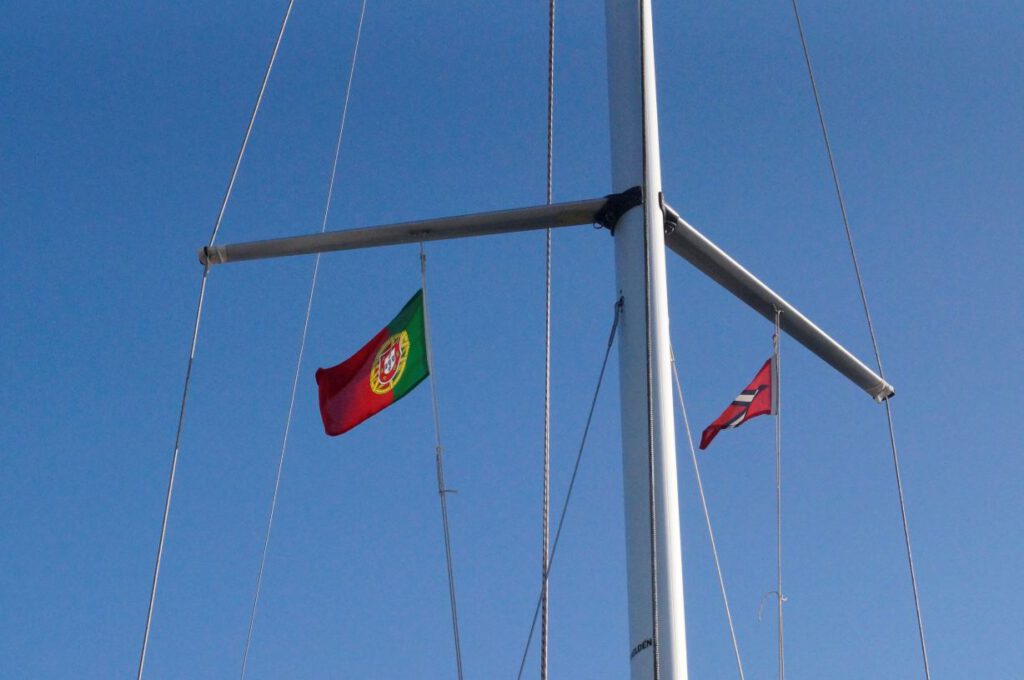
Unfortunately, we couldn’t notice the north wind, the nortada, in Baiona, blowing for quite a while. So far, it has been too strong, often over 20 knots of wind. Unfortunately, always this led to higher swells of around 2 metres. Certainly, it may be nice for larger yachts to sail, and they can make fast progress with a backstay breeze. However, for us, it is nothing. Therefore, I waited until only 1 to 1.5 m seas forecast. On 4 July, the time had come. Last impressions from Baiona
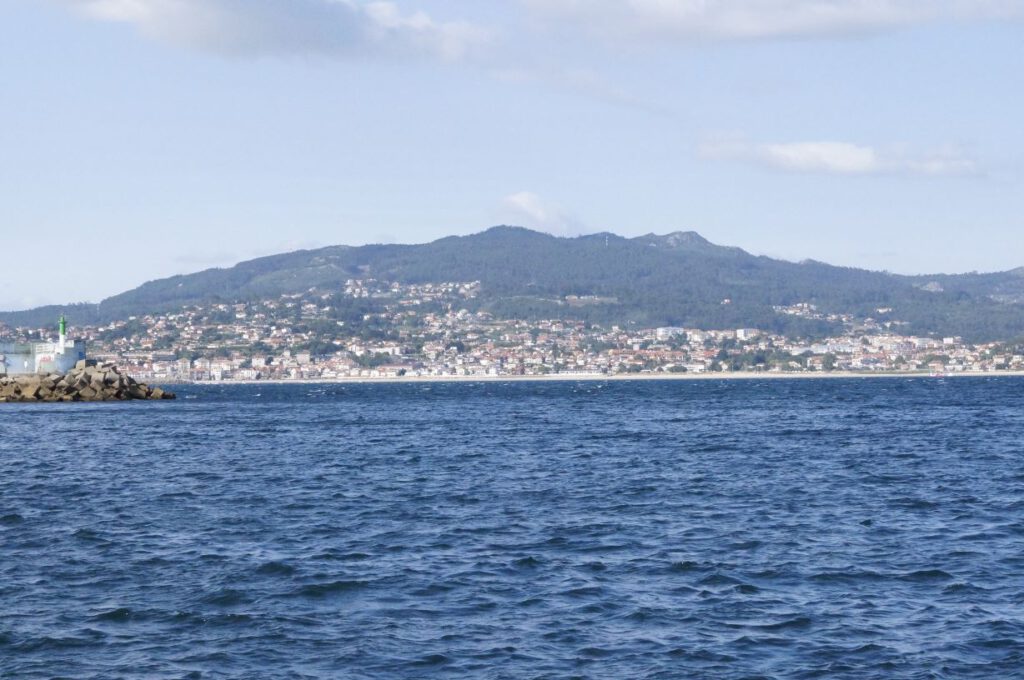
The bay of Baiona with still stronger wind
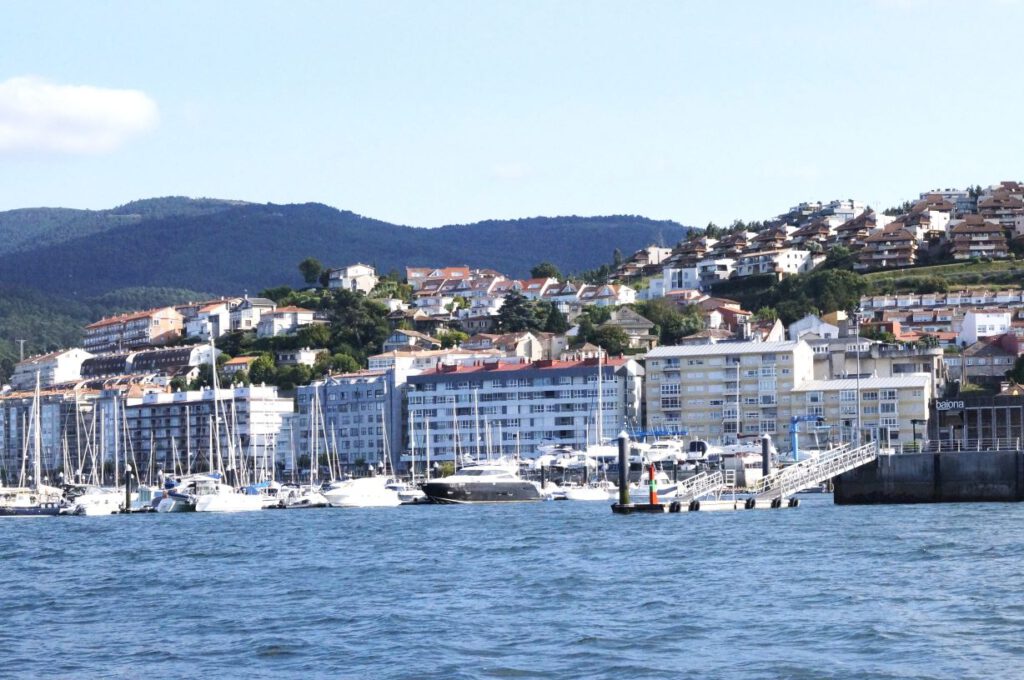
The hills, which I will soon really miss.
On the way to the last headland, the Atlantic sends its greetings, looks like a rather restless tour without wind.
Last impressions of Galicia.
From the Portuguese border, the wind picked up, and I was able to cover the last 12 nautical miles under sail.
The border river Minho. If you look closely, you can’t see a grain of sand on the northern side (right), but on the southern (left). The Portuguese simply don’t give away any of their sand. From here on, a narrow strip of dunes stretched southwards, endless deserted beaches. And something else stood out: the houses were all consistently painted white or light with red tiled roofs, almost without exception. I could see this from a good two nautical miles out.
For me, Viana do Castelo was only a port of passage; lying in the river is somewhat uncomfortable with strong currents and swells. There is a constant creaking in the lines. But I was already able to gain first impressions of the Portuguese lifestyle. The Portuguese have style, I’ll have to elaborate on that at some point, it just came to me spontaneously. This refers to clothing, but also to behaviour and charisma. And they all like to chat nicely. I like this language.
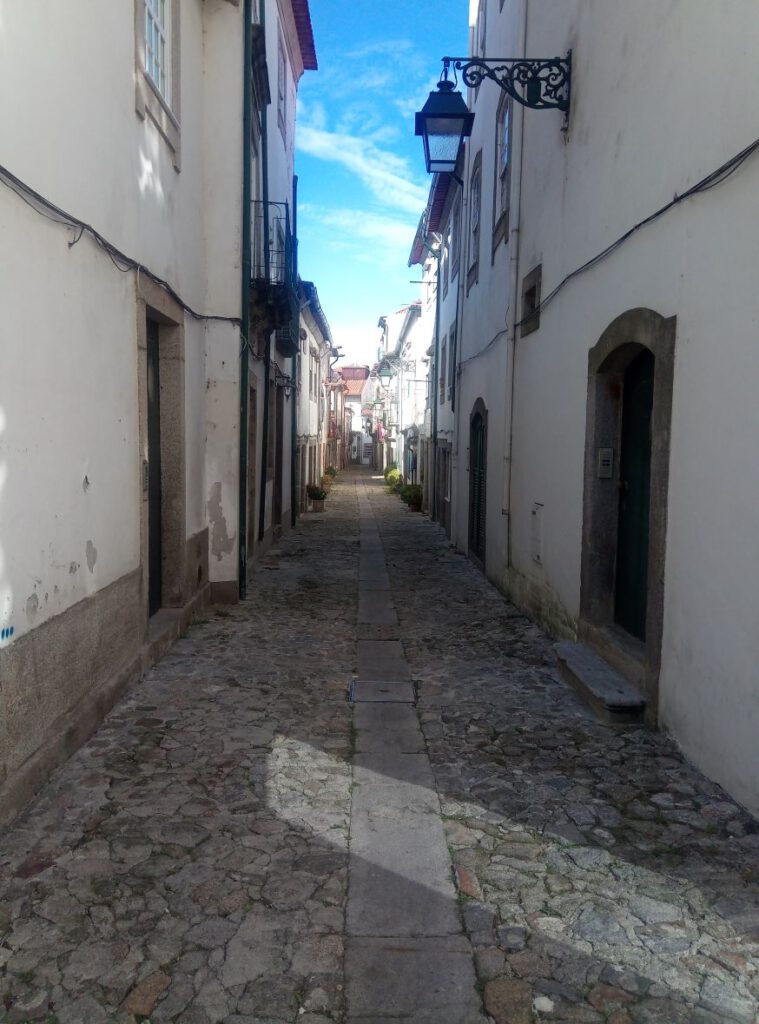
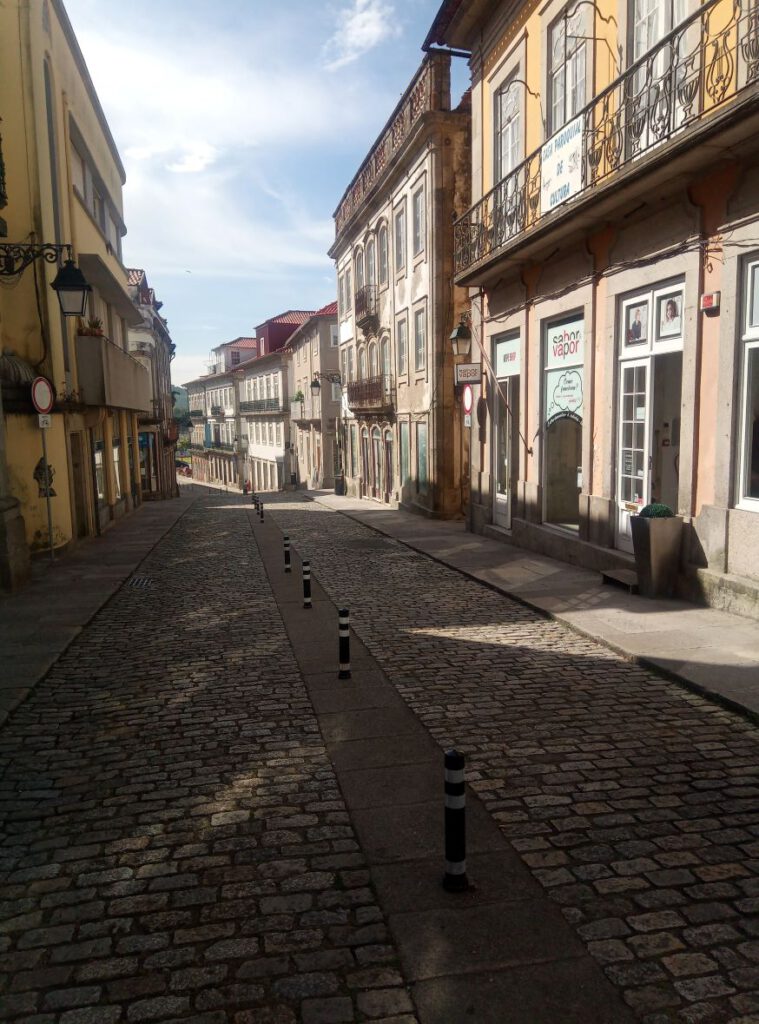
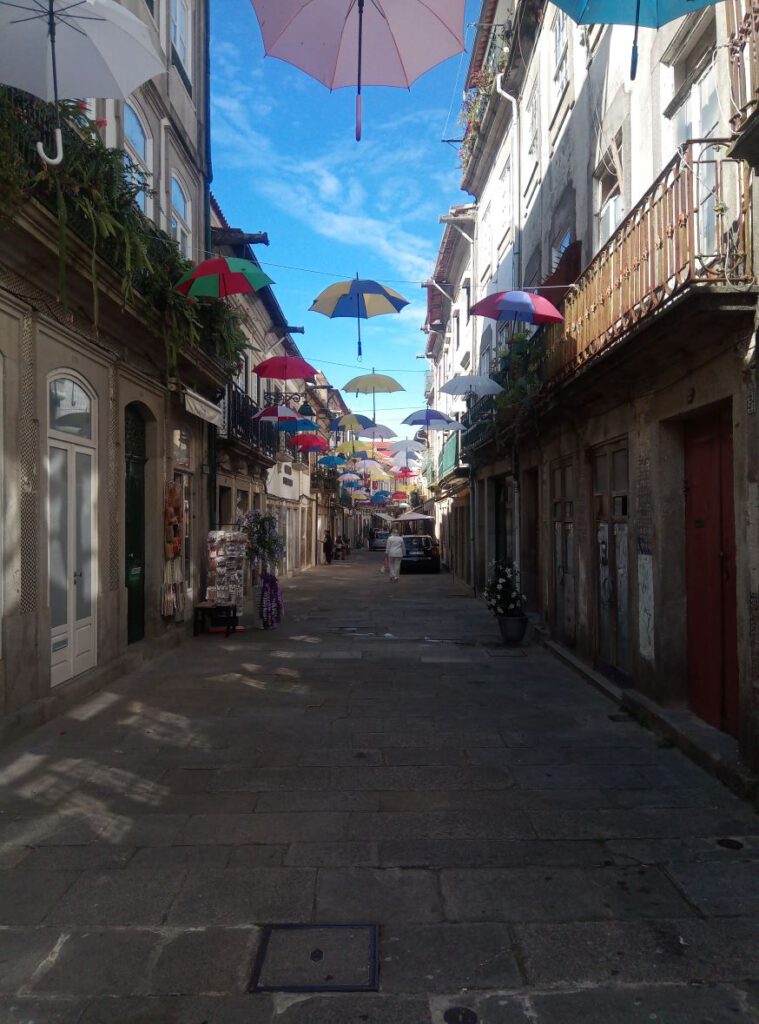
Typical buildings, there are clear differences to Spain, you just have to let it sink in a little longer.
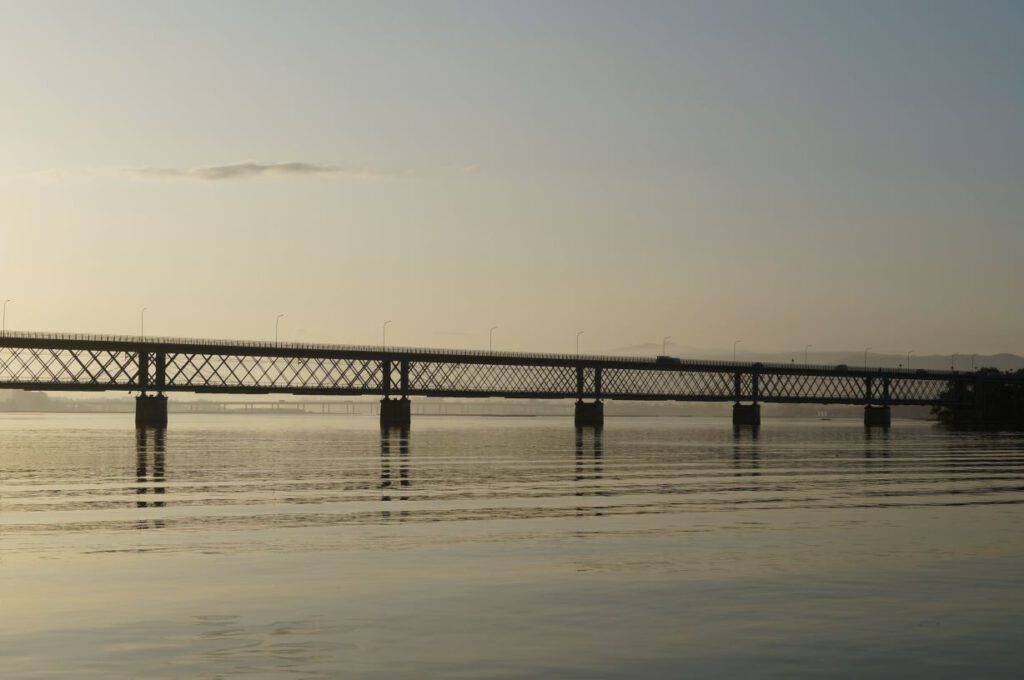
The Eifel Bridge in the morning.
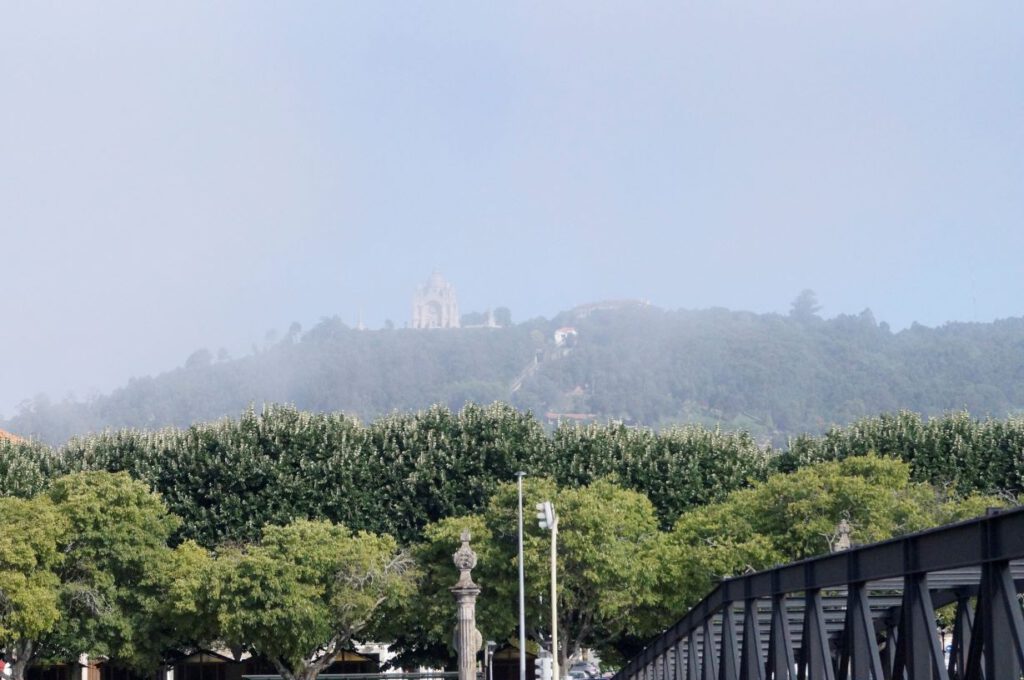
The fog has lifted, view of Monte de Santa Luzia with the church Santuário do Sagrado Coração de Jesus (great name)
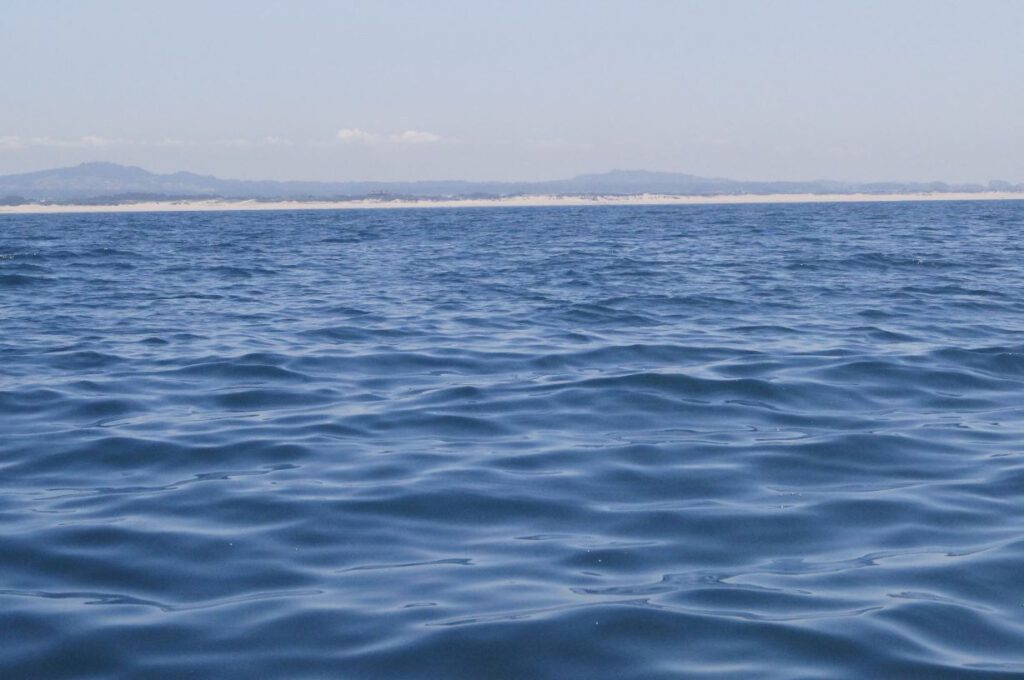
Endless beaches with dunes on the way to Póvoa de Varzim
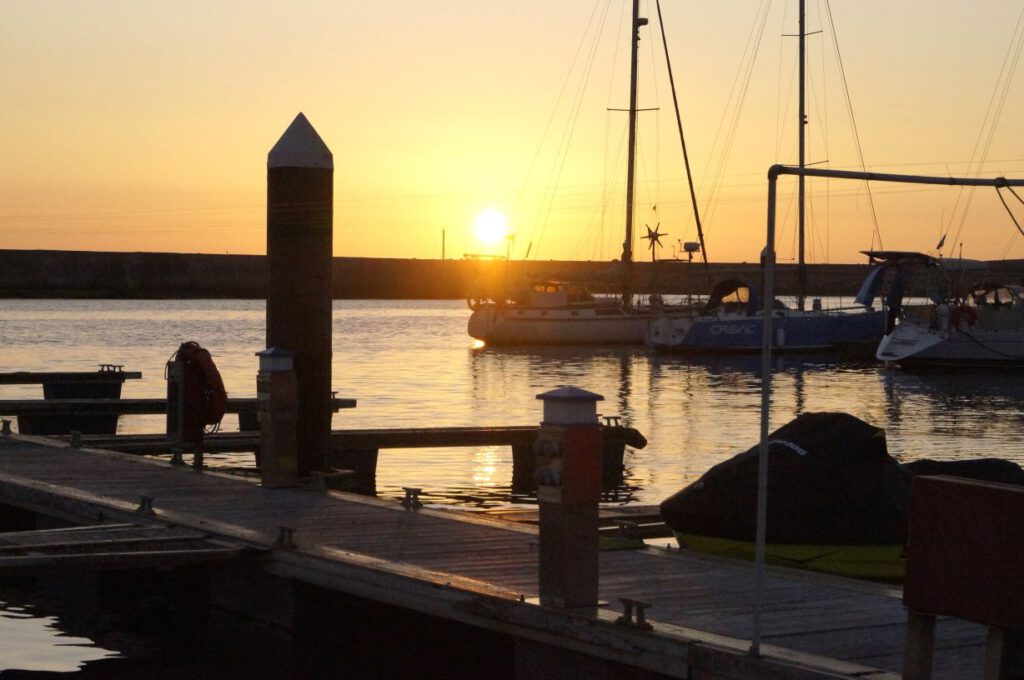
After all, the perfekt end of the day.
Sunday, 30 July
Póvoa de Varzim
After three and a half week, I am still here. After having a closer look at the harbour and its surroundings, it was clear to me: this is the harbour, I have to use for a thorough overhaul of amica. In the harbour of Póvoa, there are more boats on land than in the water. Quite obviously, this harbour is set up for boats brought ashore here. Also, it is relatively cheap, especially for such a small boat like amica.
Sometimes it will be understood, why this harbour be closed temporally. Currently, it is only on yellow warning level, you are not supposed to enter or leave around low tide, cause there are only 2 m deep in the entrance.
Good aerosols
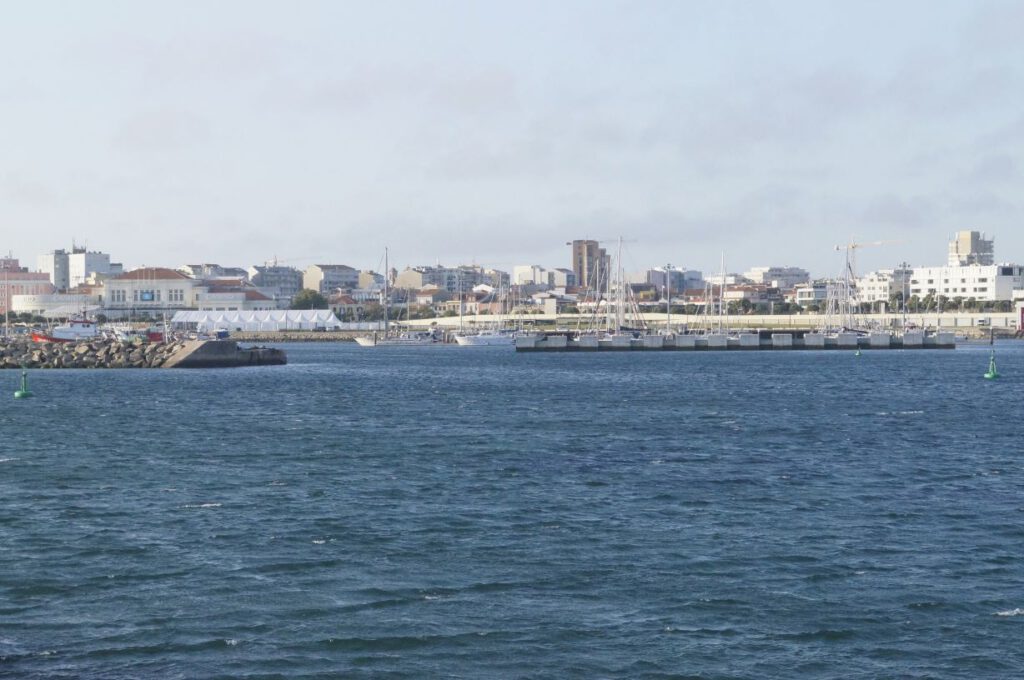
The north basin, with places for the really big ones
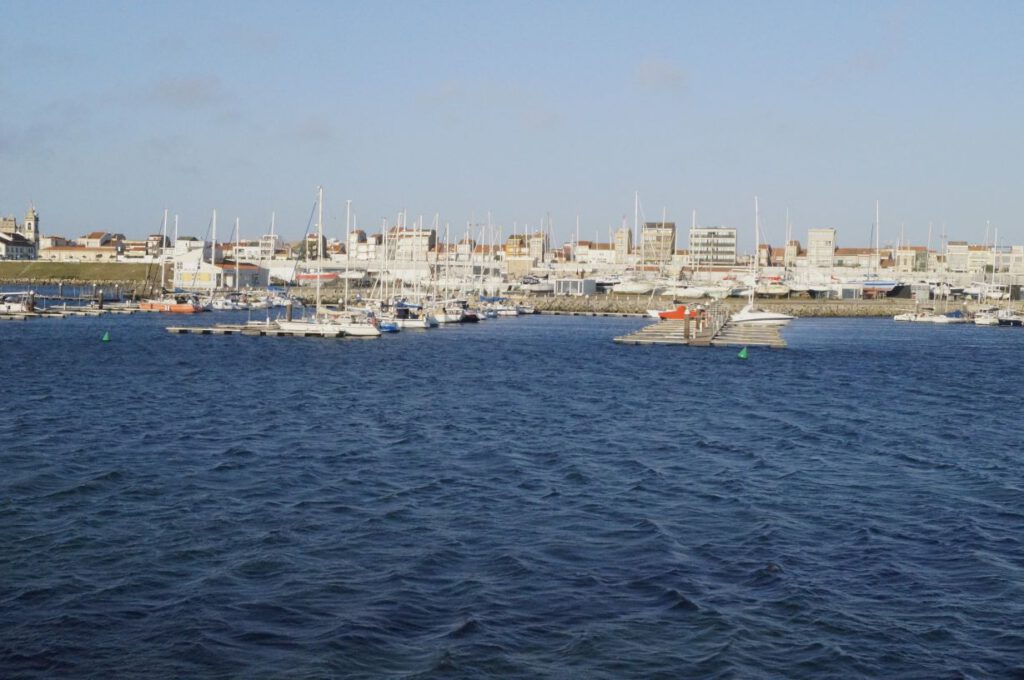
Guest area, behind it the onshore area.
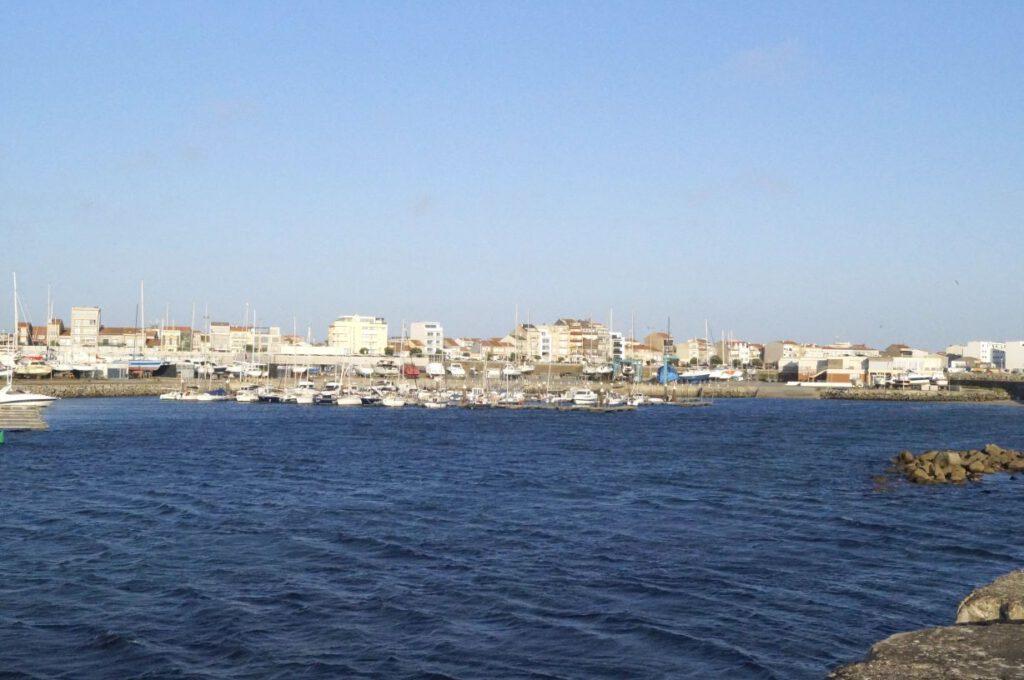
Local berths, travel lift and other onshore area.
Besides short-term land moorings for amica, there are, as often in the south, long-term land-moorings (several years) and abandoned boats.
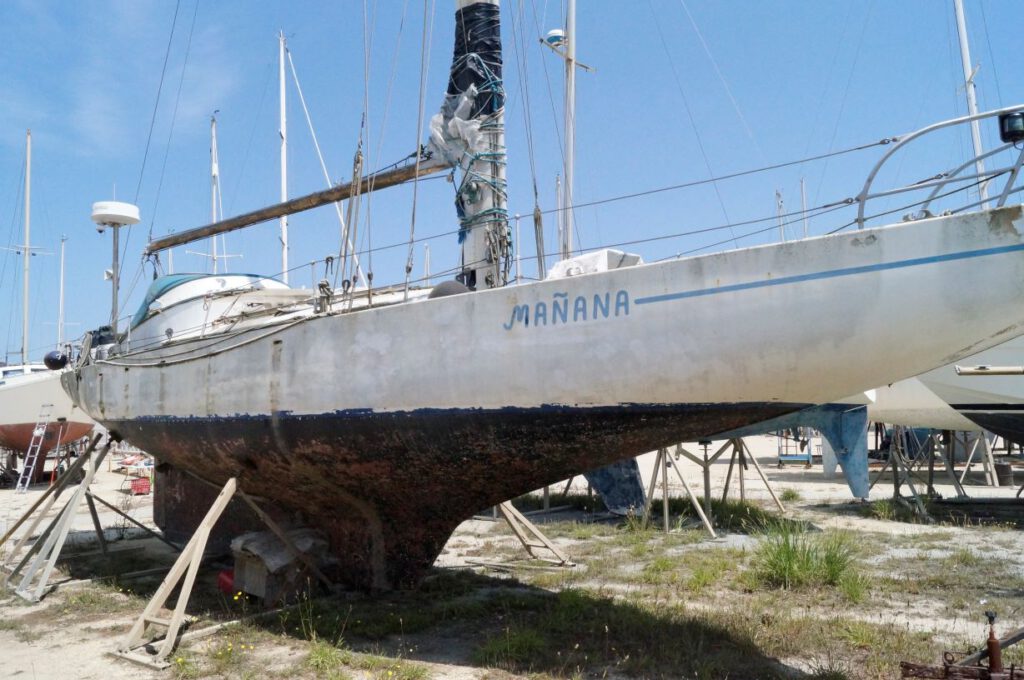
Abandoned Boat 1
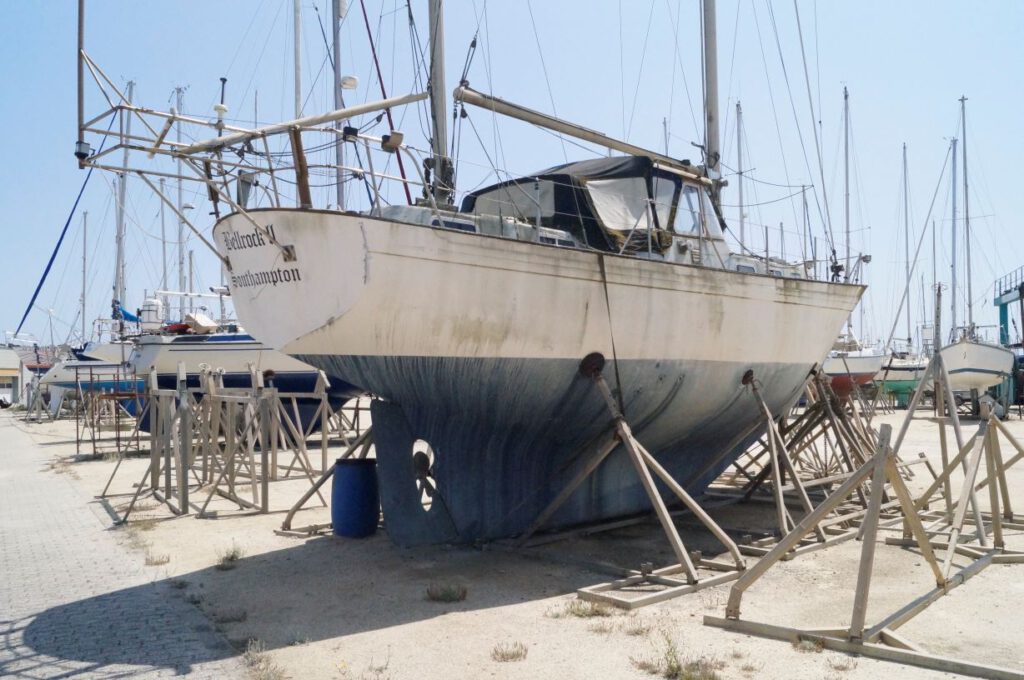
Abandoned Boat 2
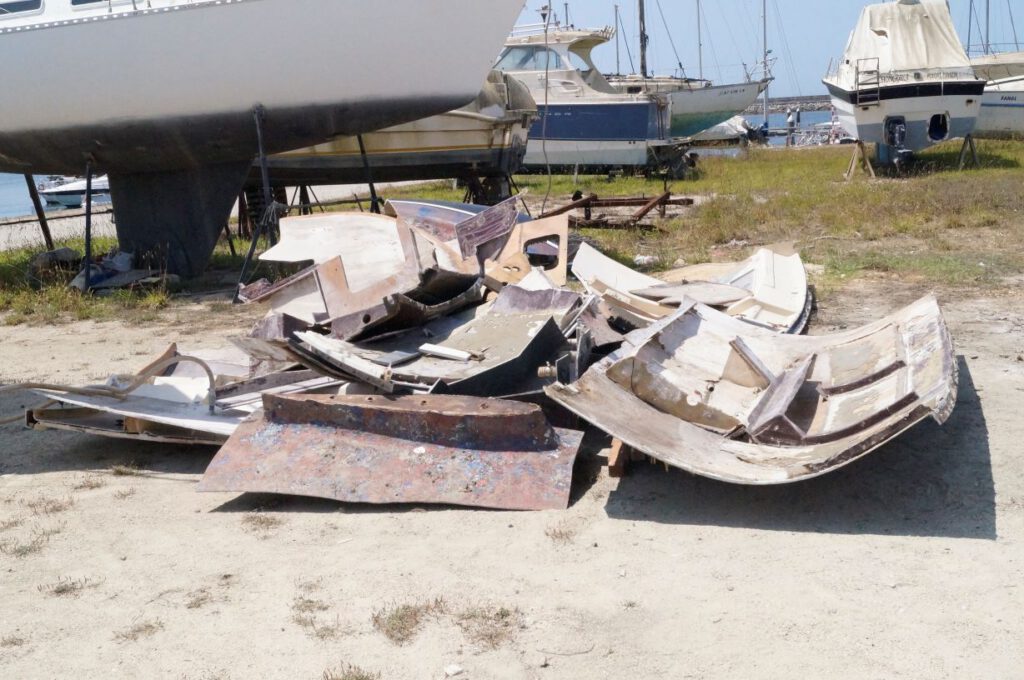
Completely abandoned boat, the end
Of course, it is not easy to put the boat ashore quickly, but only I had to wait a few days for an appointment for the travel lift. I had bad luck with the paints (primer, antifouling, thinner and clear varnish), the service company was willing to get them for me. Nevertheless, when nothing was in stock in Spain (Vigo) either, I took matters into my own hands. Quickly, I ordered everything in Bremen and hoped that the DHL delivery time would not be too long. Fortunately, only it took 6 days, amica was already on land. The official delivery time was 9 days, but after five day the first delivery was made from postage. The good man just couldn’t find the Receção by all the numerous masts and took the package back to Porto, but the next morning it was arriving.
After 15 months in water, I was curious to see, what it looked like underneath the boat. So amica came ashore and I let the underwater hull professionally clean. Well, I can do that just as well, of course, but I didn’t feel like it.
The decisive moment, it doesn’t look so bad after all. I had expecting mussels and barnacles.
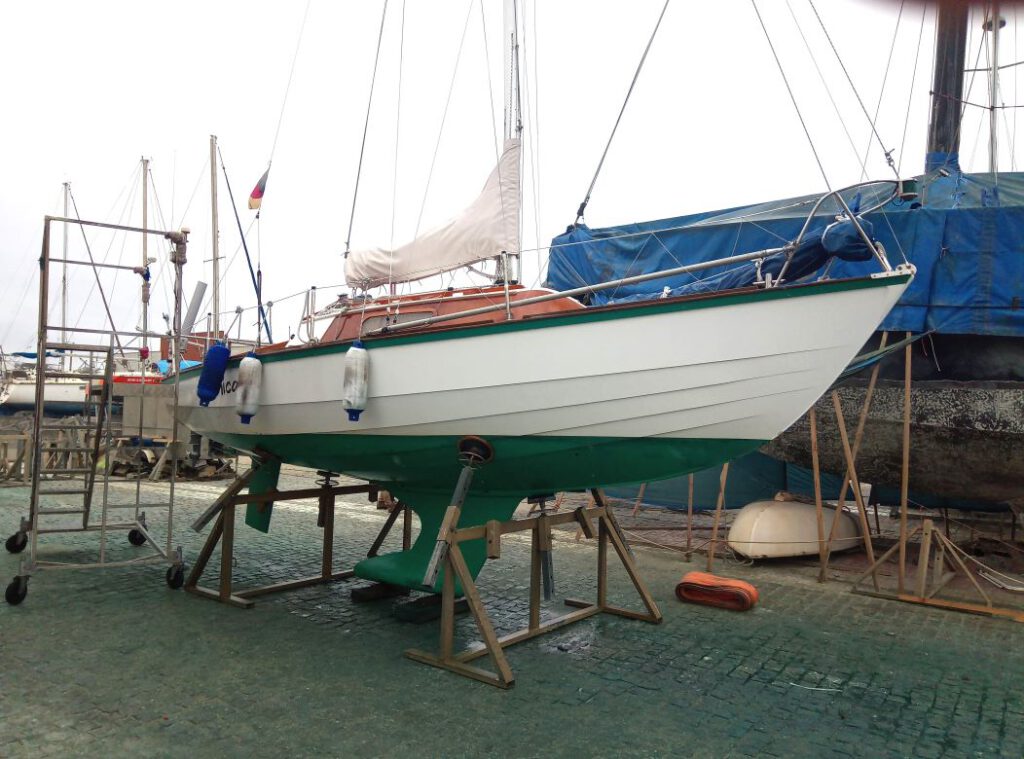
After cleaning, you could put amica right back in the water. But I like to have everything perfect for the next 15 months, with a full build-up, primer and 2 coats of Antifouling Dover White. The colour is not so be the favourite for orcas, they rather love dark boats. At the end it became three to four coats, the paint must be used up. I’m sure the effect will be work at last until the end of 2024.
I used the days ashore to clean and polish the hull and to give all the natural wood parts a new coat of varnish. You have to varnish every 4–5 months.
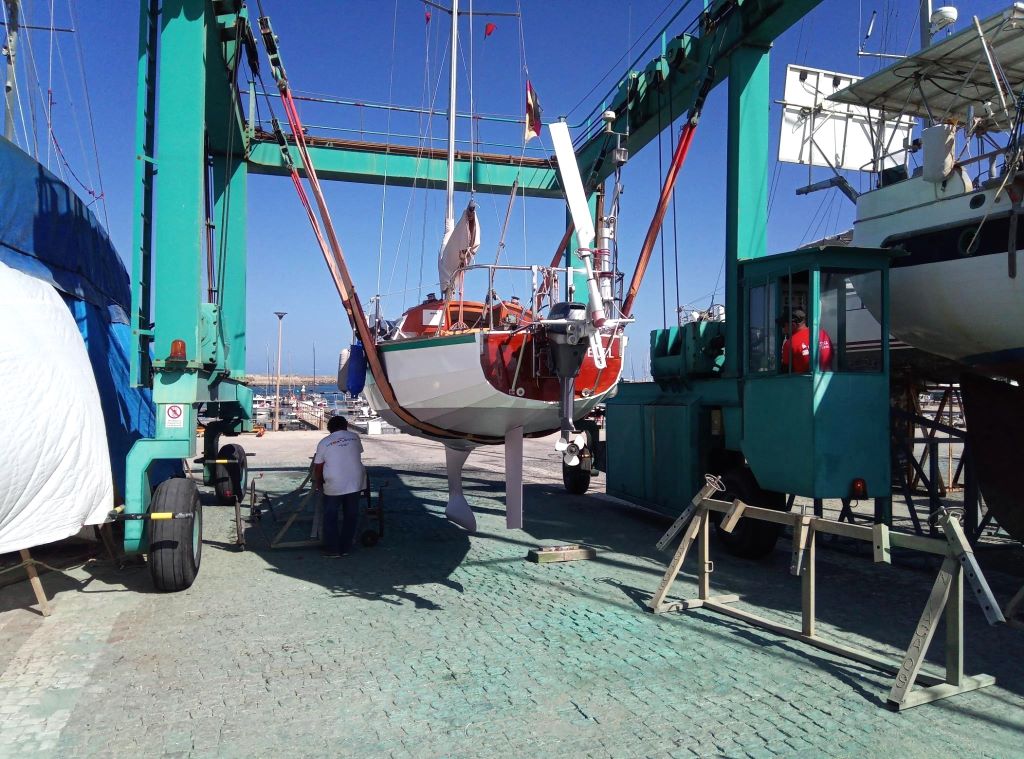
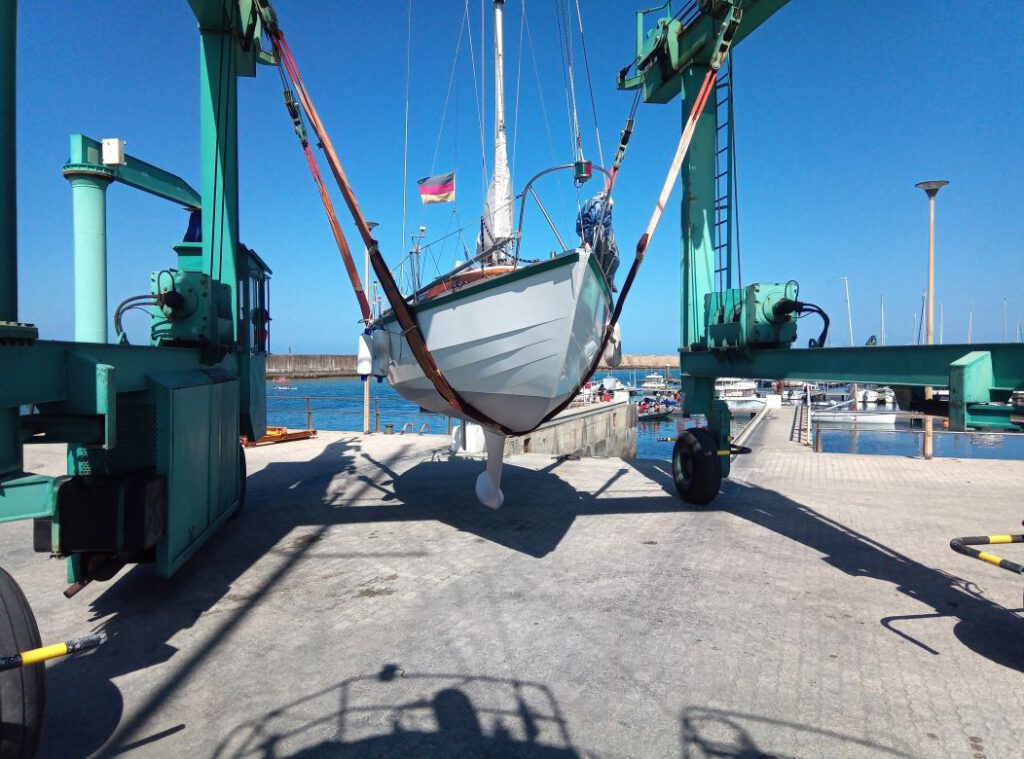
The result was impressive, even the boss from the service department thought so, in the picture you can only see his back.
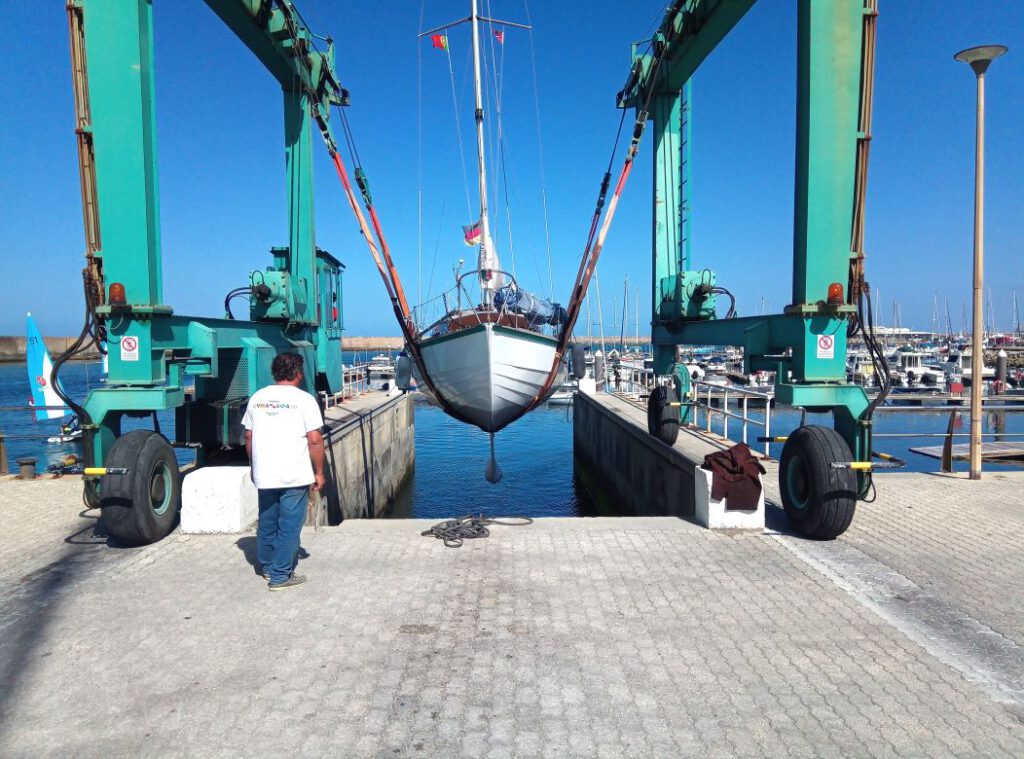
After 13 days, amica was put back into the water. Now I sanded and varnished the wooden parts on deck and cleaned the teak deck thoroughly.
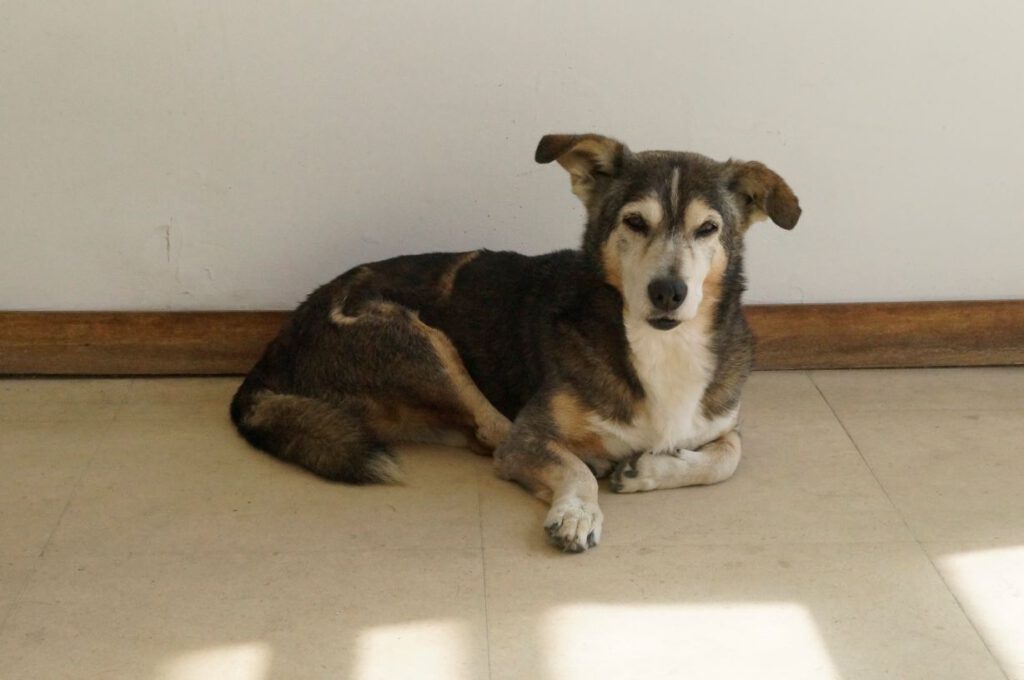
My friends, the tripod
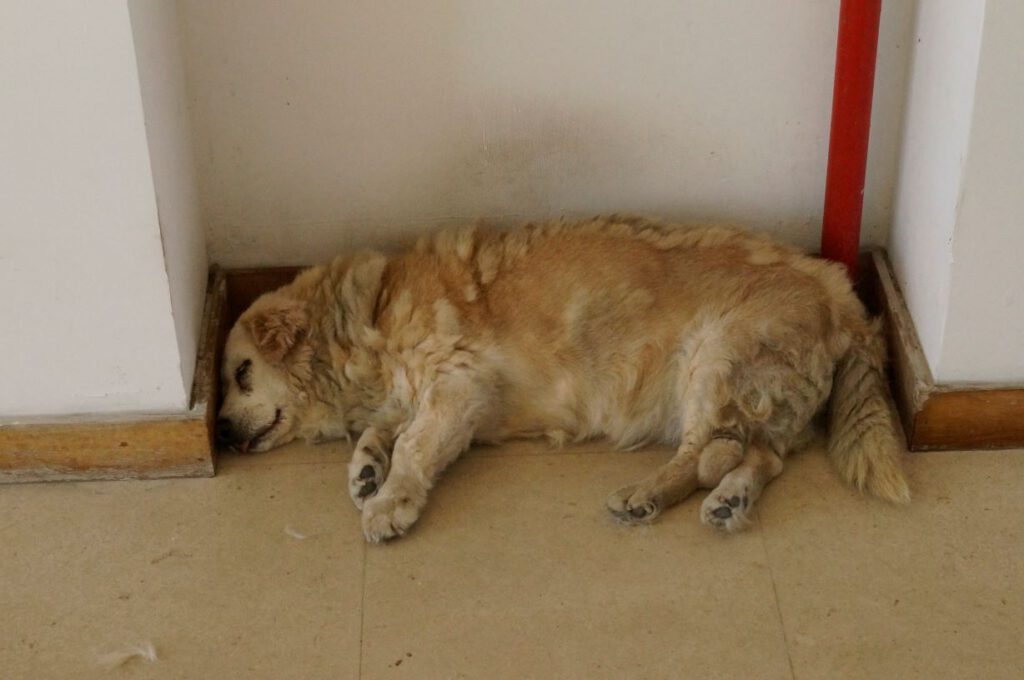
and the slightly older one, always just sleeping.
Póvoa de Varzim is a small town in transition. There are dilapidated corners and quite a few newer buildings. The traditional style with the red roofs is slowly disappearing, also traditional frames of windows and doors are hardly to be found any more. Instead, bright colours and clinker bricks continue to be used and everything is, as always, very well-kept.
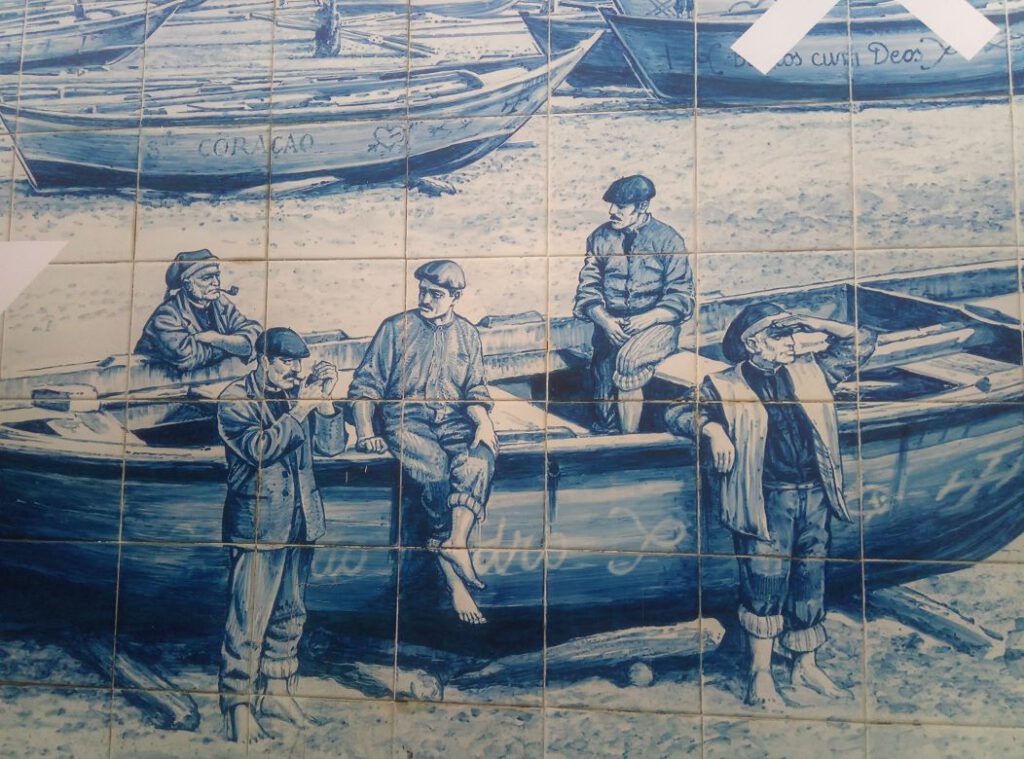
Azulejos on plastic, at least the tradition preserved, even if only as a copy.
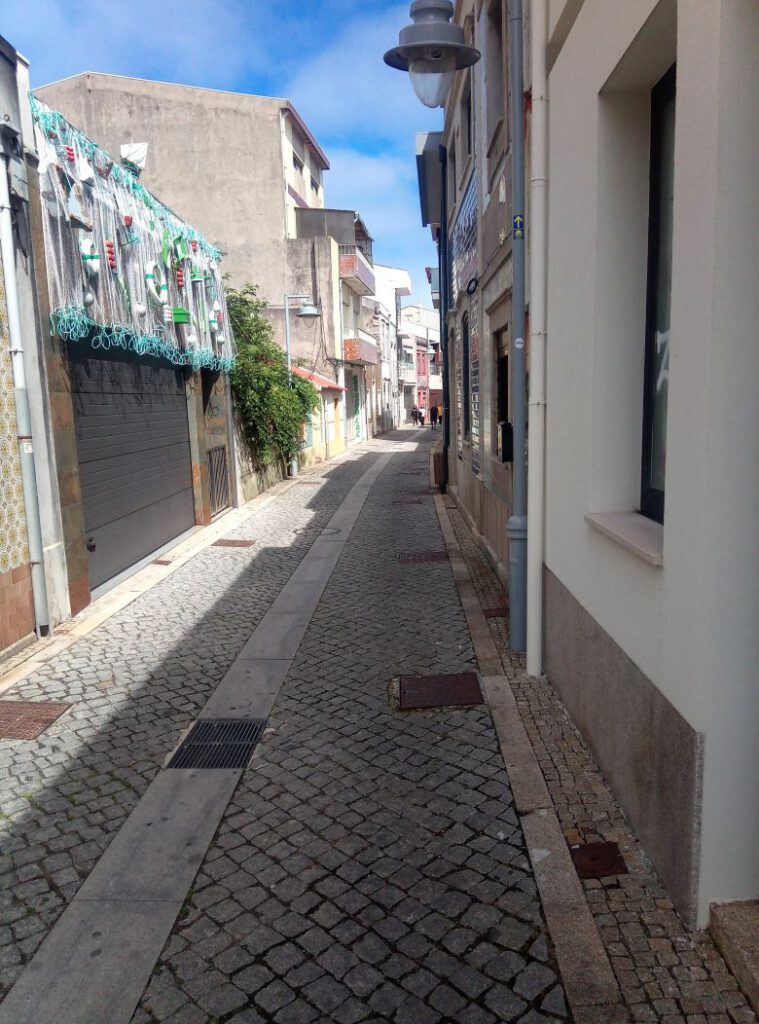
Small alley, redesigned.
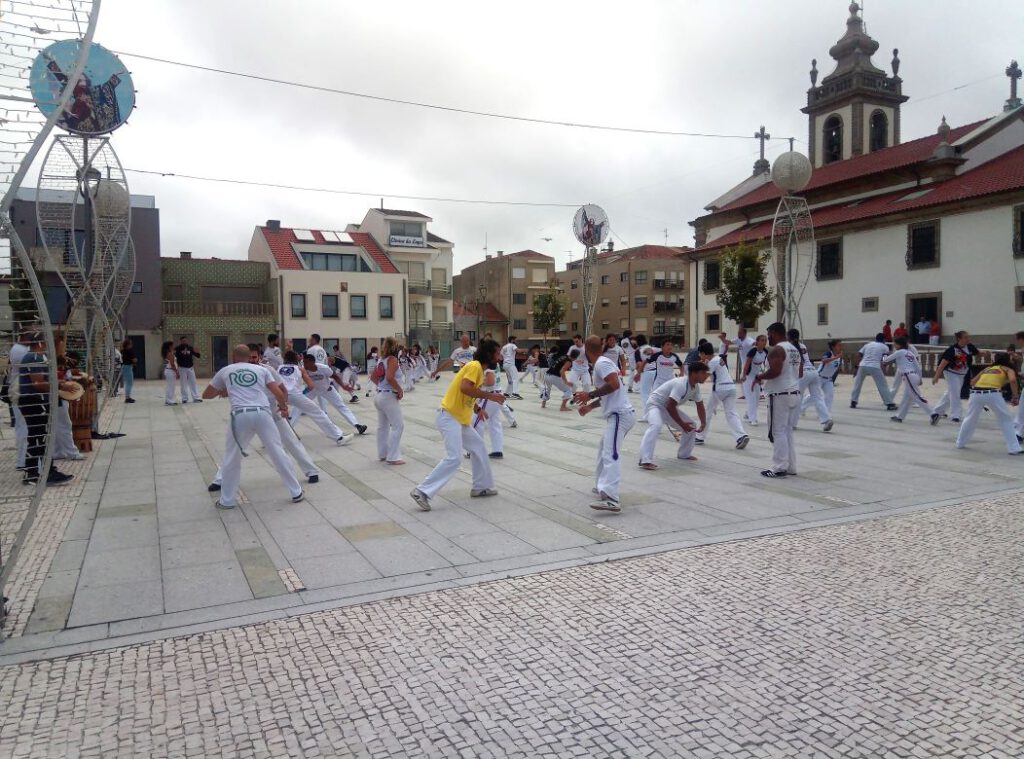
The combo stands on the left with drums
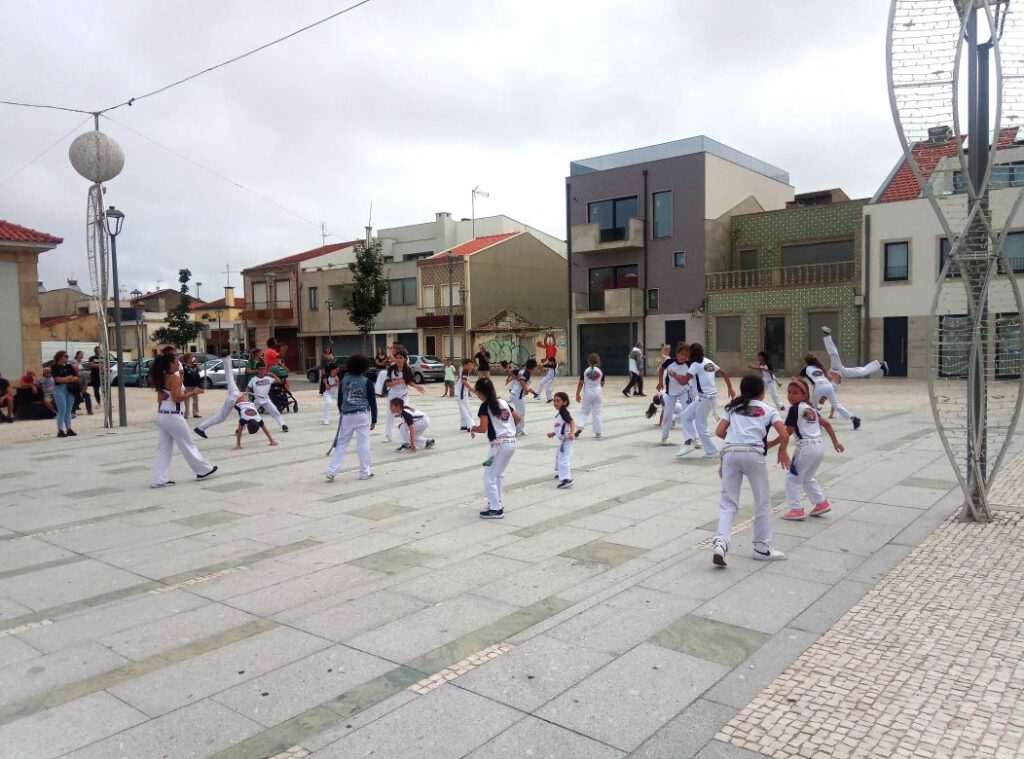
There is always something going on here, a capoeira event.
So, now I plan to sail towards the south on Tuesday, the wind and sea seem favourable and the orcas are not to be seen under land from here to Nazaré.
Sunday, 13 August
Figueira da Foz
Now I also navigate by temperature, not only by swell and by wind. Really, they have a heat problem here. In Lisbon, for a few days, the temperature was over 40 degrees. In Porto, too, it was always over 35 degrees. Only on the coast did it barely get above 30 degrees. It cooled down a lot at night. Here, the temperature of the Atlantic Ocean is only by 15 degrees. My feet were in the water, but it was too cold for me to dive in completely, even though the air temperatures were inviting. Unfortunately, the excursions to Porto cancelled; neither from Póvoa de Varzim nor from Leixões did I dare to go to Porto. In the coastal harbours, you can still walk around until 12 o’clock, only the sun is annoying.
One more thing I have to tell, because I noticed it while inspecting the underwater ship on dry land in Póvoa. Do you remember the short report about the aborted approach to Suances in northern Spain? I had to manage a 180-degree turn while surfing the wave, and it worked, but with an extreme lean. At that time, I was already afraid that the pressure on the rudder was too heavy. Yes, and in Póvoa I could see that the rudderstock slightly bent. The rudder is about half a hand’s width from the middle at the lower end. This is more of an optical problem, because the amica still steers very well. Aesthetics underwater no further interest to me.
About the port of Leixões or Matosinhos/Leça da Palmeira is not much to say. It is the industrial port for Porto, container terminals, a large fishing industry and the surrounding area is in a state of upheaval, similar to Póvoa, although even more so with abandoned houses exposed to decay. Here in the north of Portugal, money will be earned with industry and commerce, and that doesn’t always look nice. The tourist beach strips cannot hide this fact. The average income in the Algarve, the tourist hotspot, is the lowest in mainland Portugal. There is probably no money to be made from tourism.
You can rely on the Nortada, the north wind. In the morning, it is usually calm, which allows the temperatures to rise slowly until around noon. Then the cool north wind comes and provides a pleasant climate for the rest of the day.
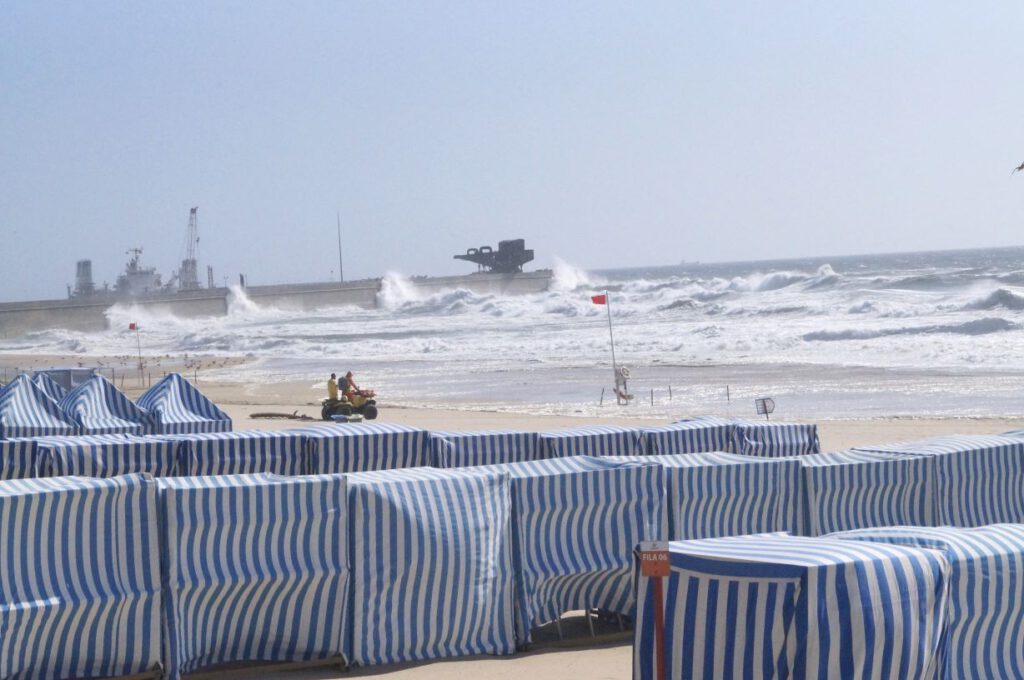
On the beach, it sometimes looks like this when the 2 m swell is running then.
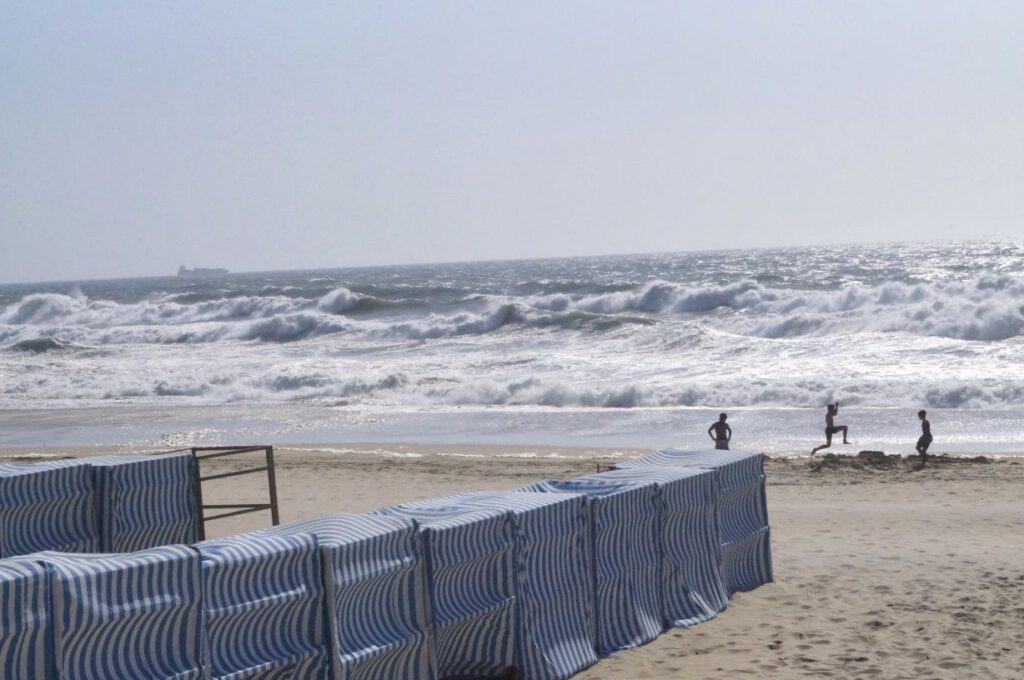
The red flag is visible and no one goes into the water here either.
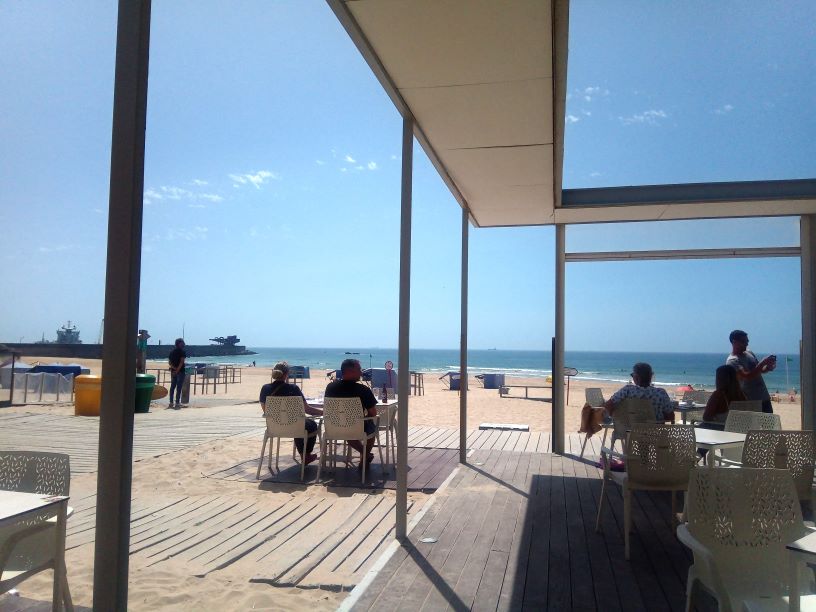
It can also look quite pleasant, but they have only set the bathing flag to yellow. Probably it is not safe to swim here.
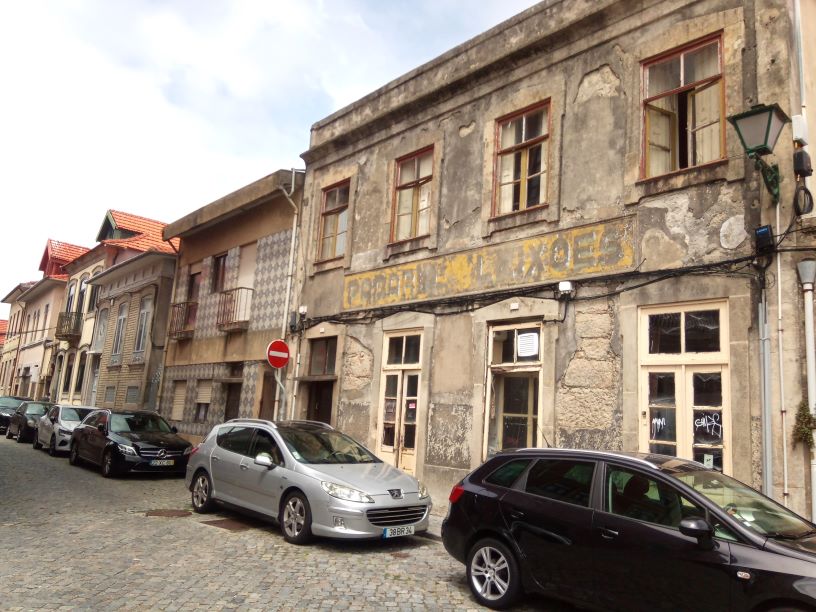
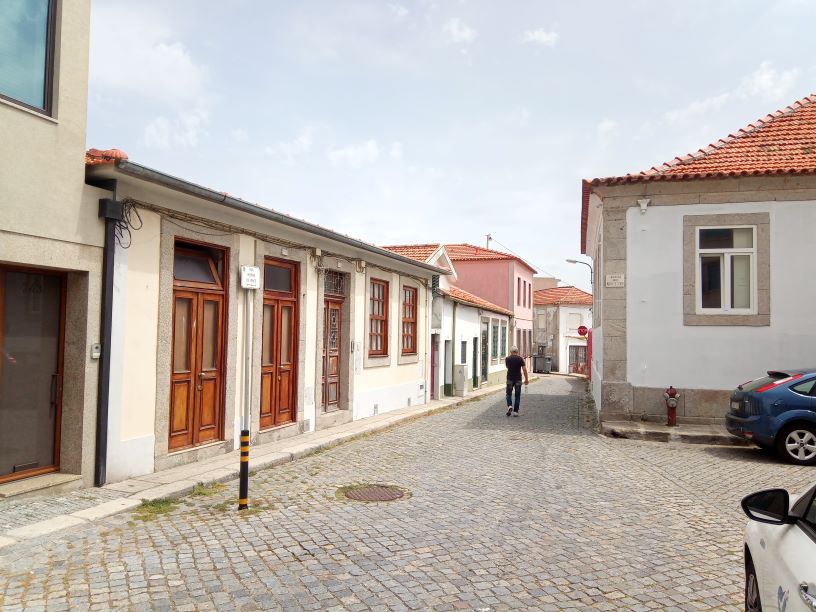
A few houses in Leça da Palmeira. At least they continue to protect themselves from ghosts and demons, because that’s what the frames around doors and windows are for.
Morning exit from Leixões, harbour overview from the container terminal to the cruiser terminal
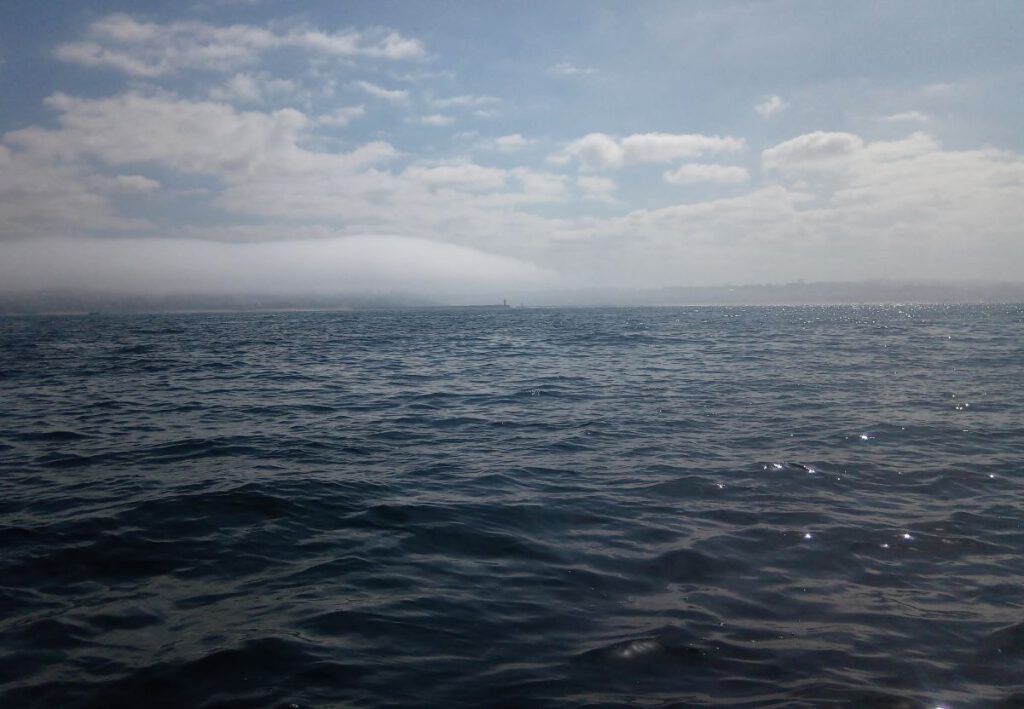
Mouth of the Douro, Porto only be guessed at, under the white cotton wool, so dense was the fog.
Half an hour later, the wind came up, and the visibility became good.
On the windward side, half the wind always looks boring,
but on the leeside, you can tell I’m pushing through the water at a good 5–6 knots.
Entering the Ria de Aveiro.
I didn’t sail up the 8 nm to Aveiro, but anchored off Sao Jacinto. The next morning there was once again real fog with visibility around 50 metres. Nevertheless, I set off for Figueira da Foz shortly after eight. The swell was supposed to increase to 2 m towards evening, and I didn’t want to experience that. A foggy trip in a calm, as is usual here in the north. With a distance of one nautical mile from the coast and a water depth of 15 m, I saw nothing but water. Only the increasing swell was spooky, because I couldn’t estimate any height due to the non-existent horizon. Shortly before reaching the harbour entrance to Figueira, the fog lifted, and I was able to sail into the harbour without any problems. They have a great Rececaõ here with a great reporting pontoon. The only thing is that no one is present, despite official office hours, which is something you have to get used to here in Portugal.
Sunday, 27 August
Oeiras
Relatively quick, I sailed the 145 nautical miles from Figueira da Foz to here shortly before Lisbon. Unfortunately, the sails had to stay packed up most of the time. Fog without wind, sun without wind and simply no wind seem to be normal on the Portuguese coast. Nevertheless, occasionally I was able to sail partial stretches. The consumption for the distance of a good 25 litres of petrol is extremely economical, or as a curious person from the Policia maritima put it, quite effective. On their inflatable boats with 2 times 200 horsepower, the petrol just runs through.
Fig.Foz, as called for short, is an old seaside resort. I took a closer look with a visit to the beach mile. There is an impressively wide beach with a lot of foreshore, on which, apart from the necessary planting, many leisure activities attract visitors. Due to the high temperatures, it looked empty there, only directly at the waterfront there was a lot going on. People from Portugal and Spain are probably the main groups of tourists here, although French voices be heard from time to time.
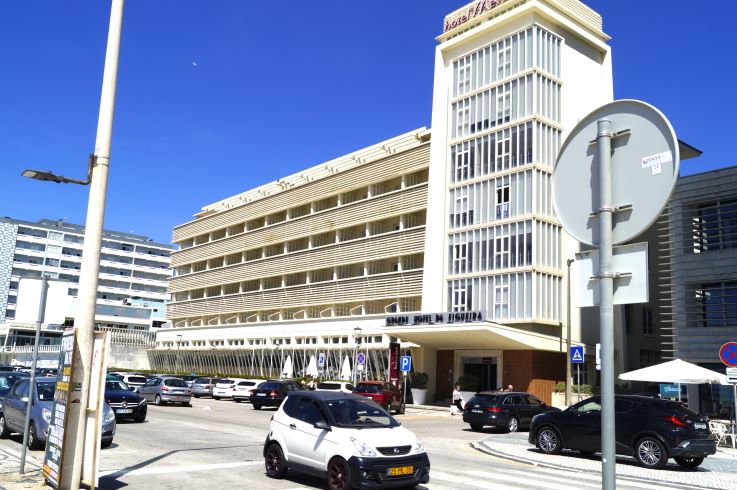
The old Grandhotel
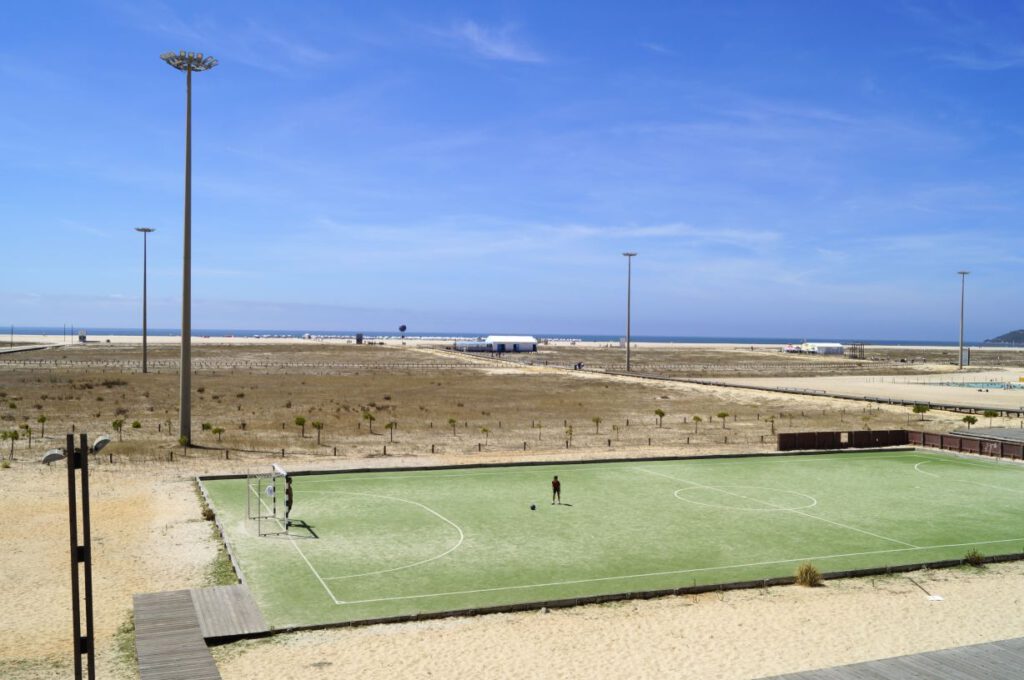
A wide foreshore to the beach
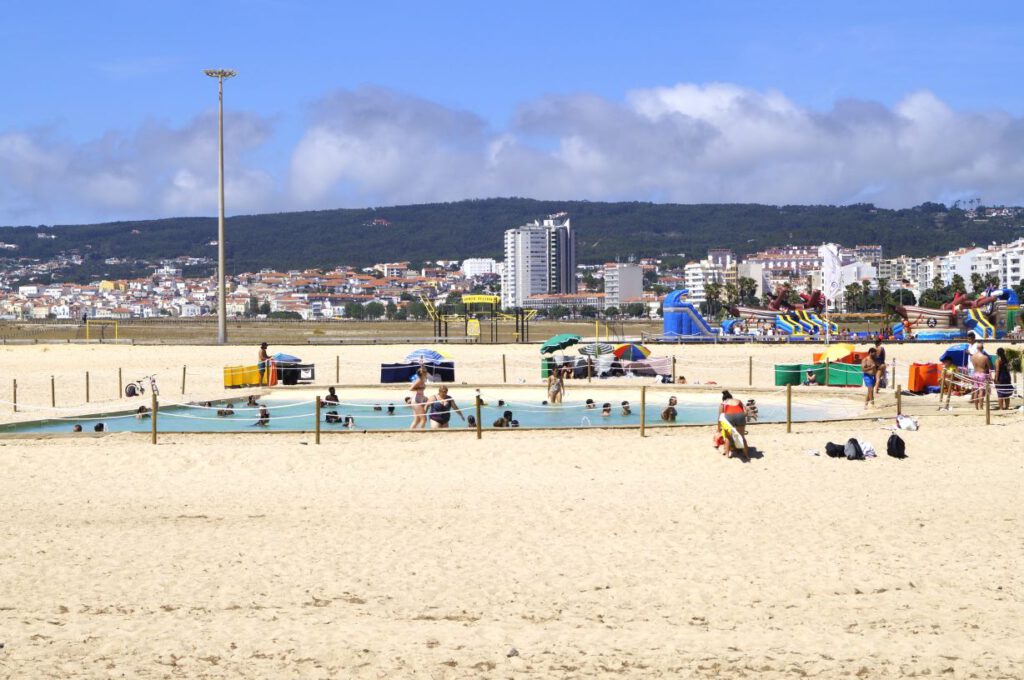
A children’s pool, because here they don’t let children in the Atlantic.
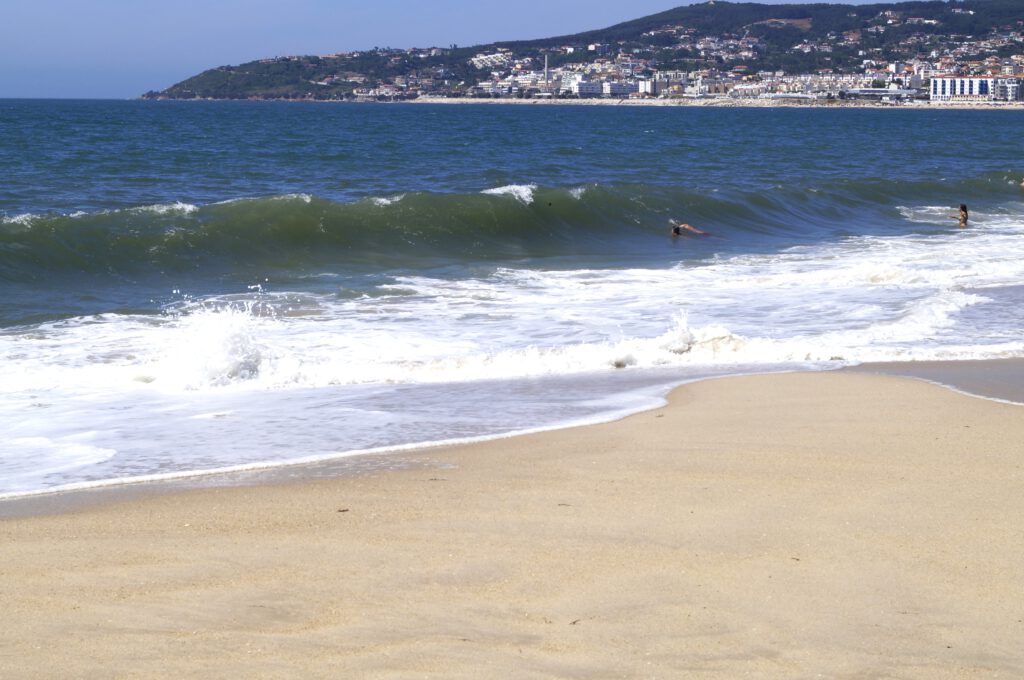
The waves on the beach are not sneezed at, shortly before breaking,
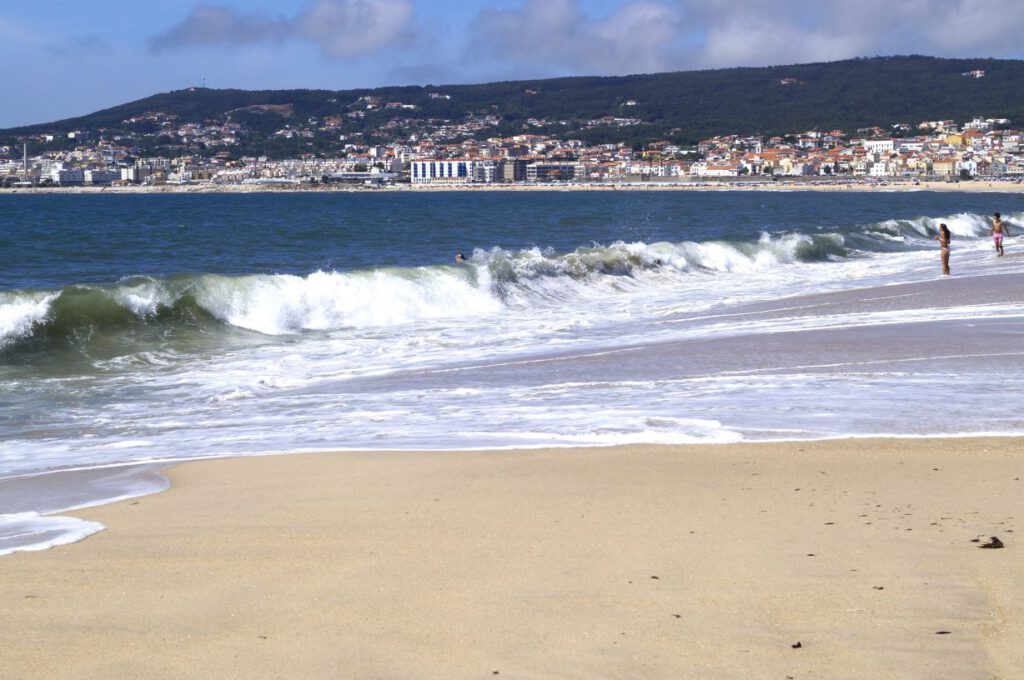
and shortly after
The harbour was more international, with a number of German, French and English yachtsman. The harbour is not large.
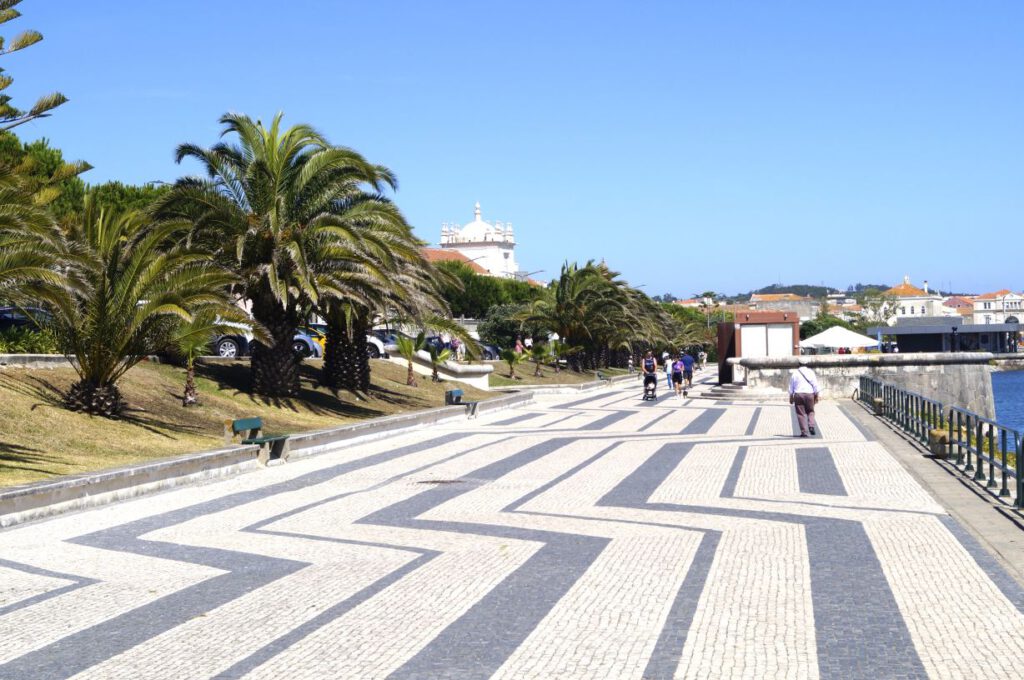
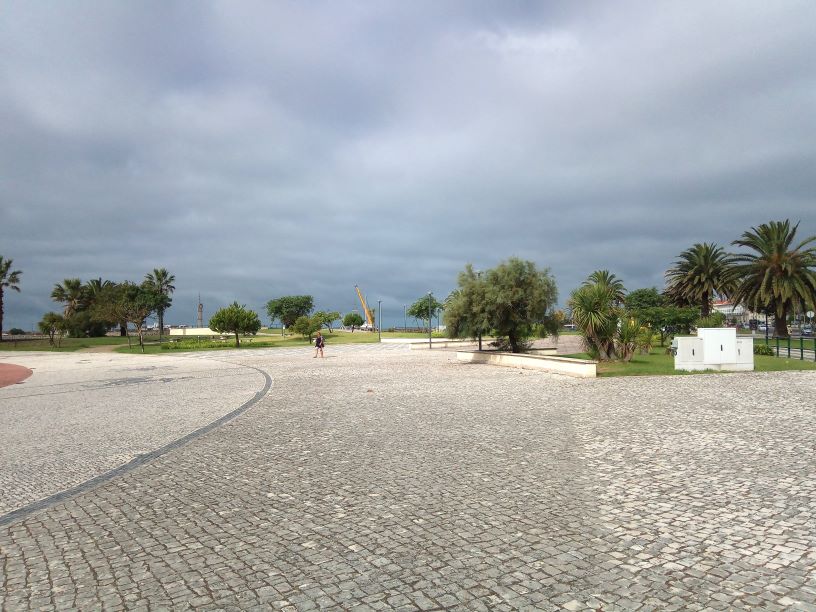
The harbour promenade is designed beautifully. However, there was not much going on in most areas. The tourist area in Fig.Foz is a little further away, towards the beach. Directly at the harbour, you are almost in the old centre of Figueira with the Mercado Municipal: no end of fish, vegetables and finally a baker, not always just these pastelarias with rather sweet cakes. Normally I have to buy bread in the supermarket here, because there are hardly found any bakeries (padarias), and if there are, they only have bread rolls.
The river Mondego comes down from Coimbra and the train also goes there. I chose the right, the cooler day to visit Coimbra, because it is home to one of the oldest universities in Europe, founded towards the end of the 13th century.
In addition, I found the train journey very interesting, as you pass through an abandoned landscape with ruins, where hardly anything is cultivated in the fields. This is the other Portugal that I don’t want to overlook. Although I could already see the changes and the problems associated with them in some ports, here it is a step more violent. After Coimbra, the picture changes, typical suburbs as you know them from everywhere in Europe. This ist he place, where money is home.
An impressive university

I felt at home here right away
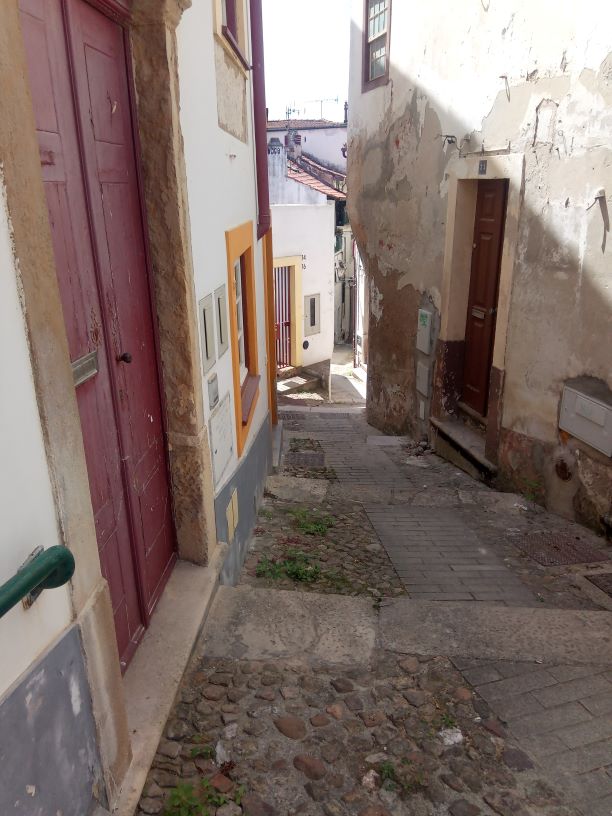
The student quarter with many exciting alleys
The university is located on a hill and from there you have a wonderful view of the valley of the Rio Mondego.
I could have a look at Coimbra for days, but amica is in Figueira and I want to continue my travel down the coast.
On the way to Nazaré, my friends the dolphins visited me once again. After seeing their behaviour, I am almost certain that I spotted an orca on the fog tour from Aveiro to Figueira da Foz. The fin, in fact, dragged along the surface of the water for quite a while, almost like sharks do. I don’t think the common dolphin – the delphinus delphis – does this, it only ever surfaces briefly and usually jumps at the same time. The orca – the orcinus orca – is more leisurely. By the way, orcas also belong to the dolphin family and dolphins only want to play. Stupid when a 5-ton orca wants to play with a sailboat, of all things. It was difficult to observe this event more closely because I was sailing on the 15-metre line and the happening was quite far out in the deep.
Entering Nazaré, the famous rock also comes into view on the left. Many people are on this rock in winter to watch the surfers. In winter the big waves (up to 26 m high) break to the left of the rock, not towards the harbour. And I was able to find out the reason on the echo sounder shortly after passing the rock, the display shoes 15 m and then nothing, no more reading, that’s how deep this underwater canyon is, over 100 m here.
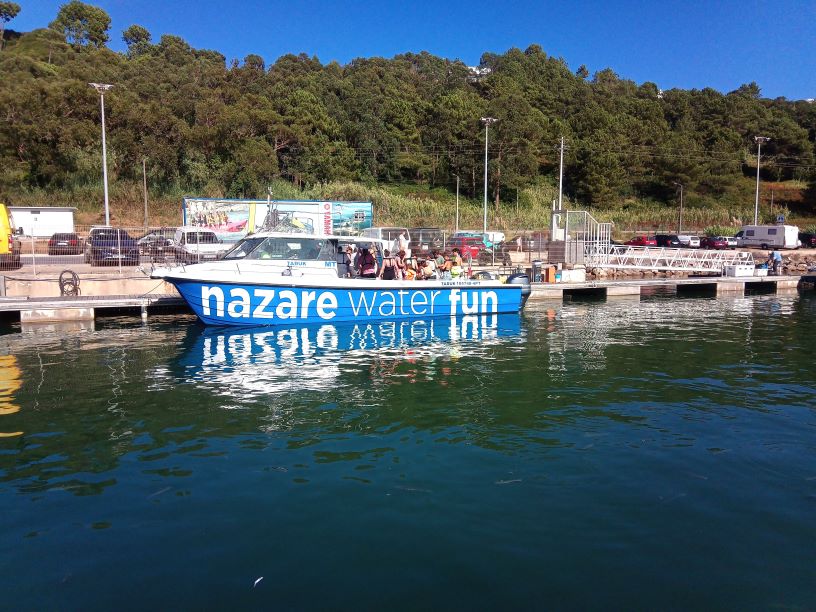
Nazaré is a real tourist resort; wicked tongues call this a place for party-hungry people. I disturbed by all the party-fun, on water and on land. It’s always noisy here.
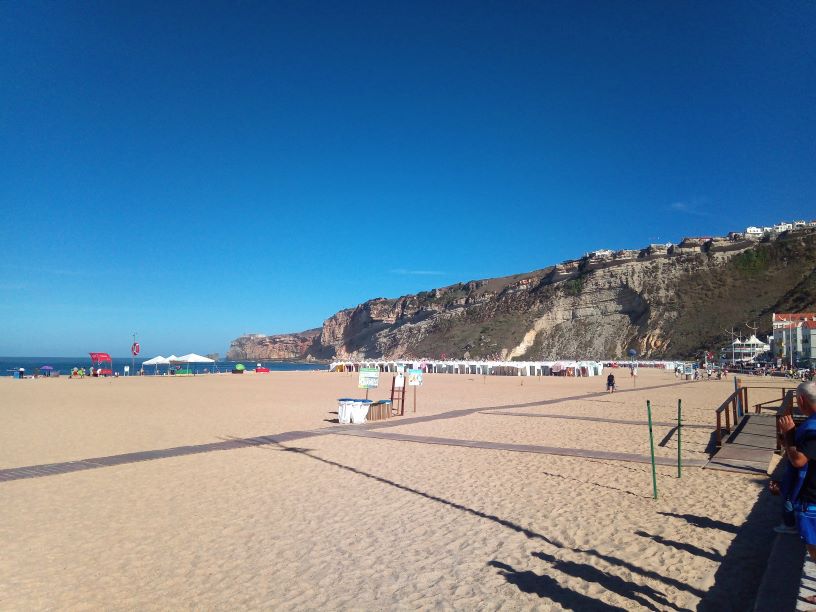
The rock of Nazaré. The staff of the harbour told me that in November, around 25 000 people up there are watching the wave surfers.
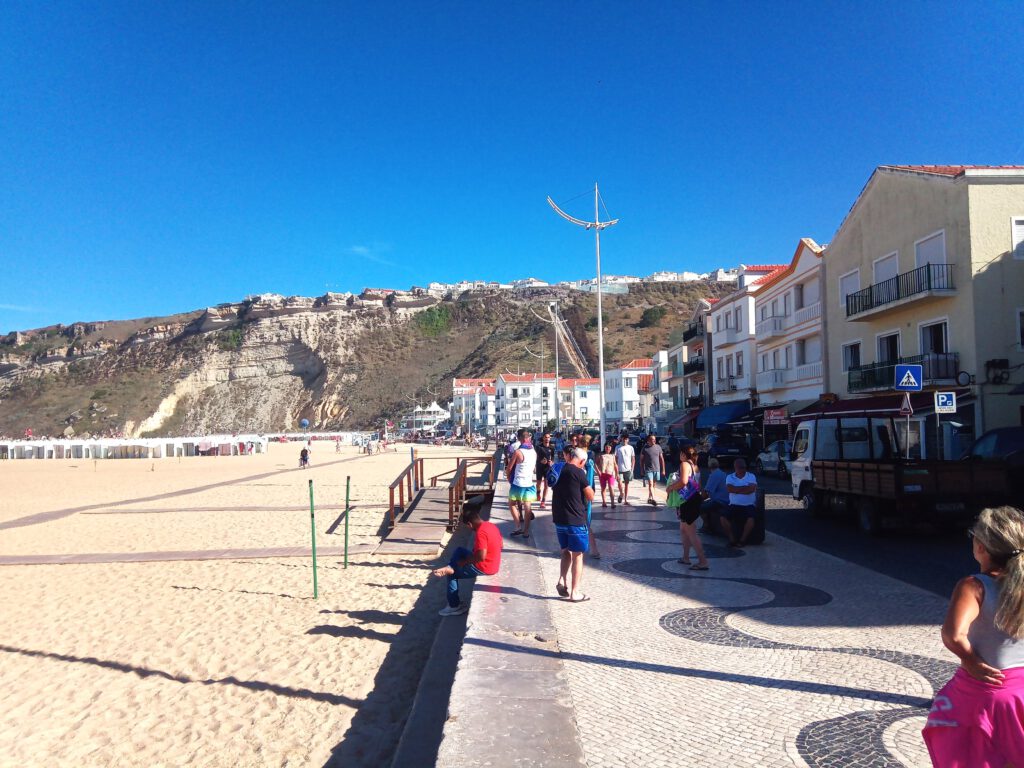
From these side, there is only one inclined railway, a lift (ascensor da nazaré), that goes up to the rock.
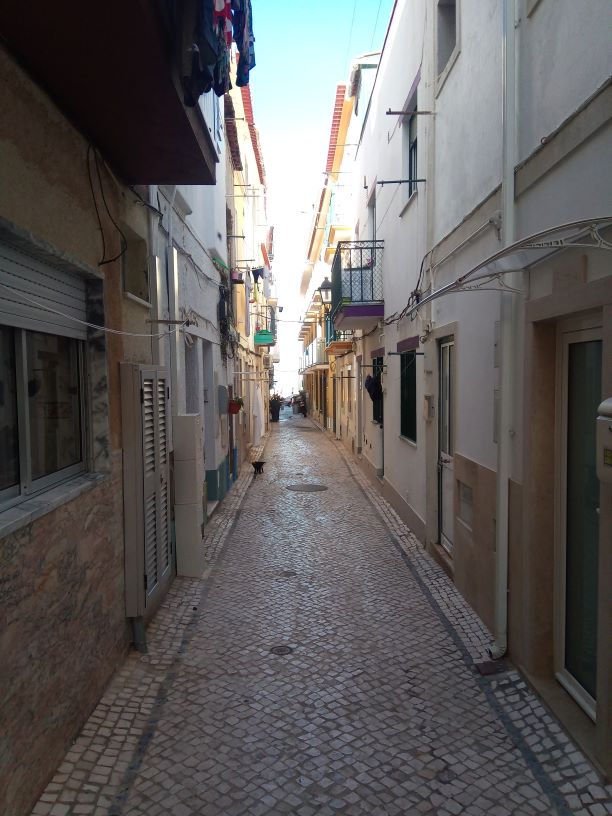
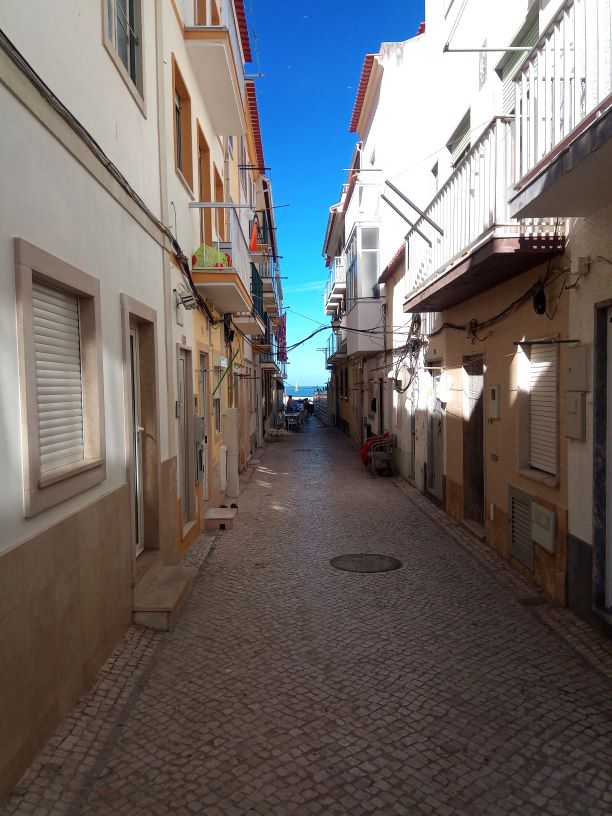
Nazaré also has beautiful alleys.
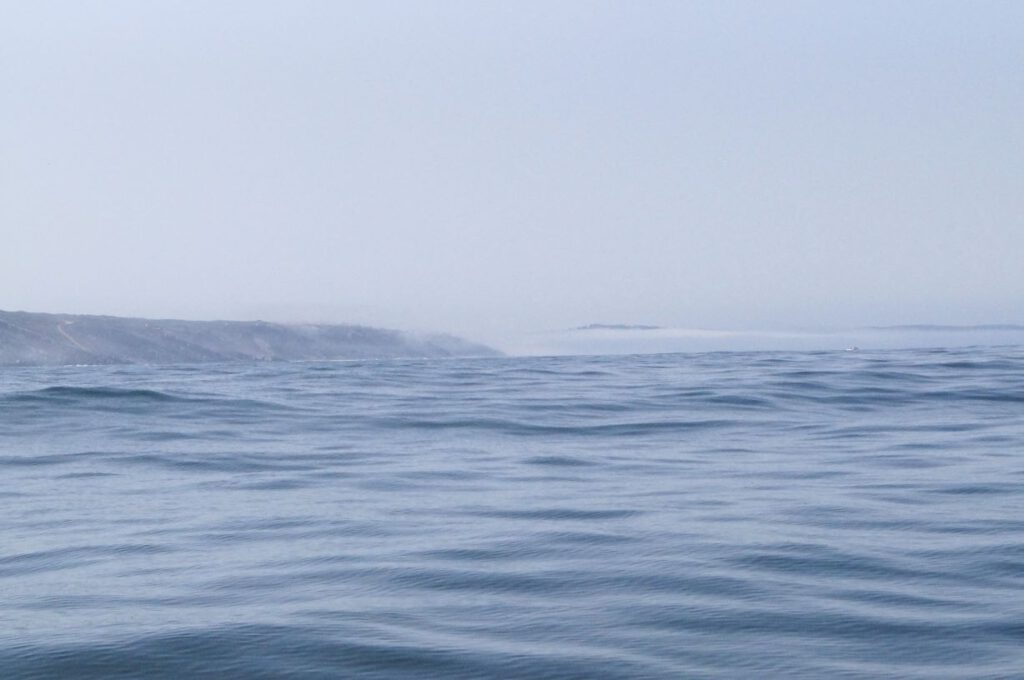
Again the trip to Peniche was foggy, here is a nice veil of mist here before the fog again almost completely disappeared around 11am.
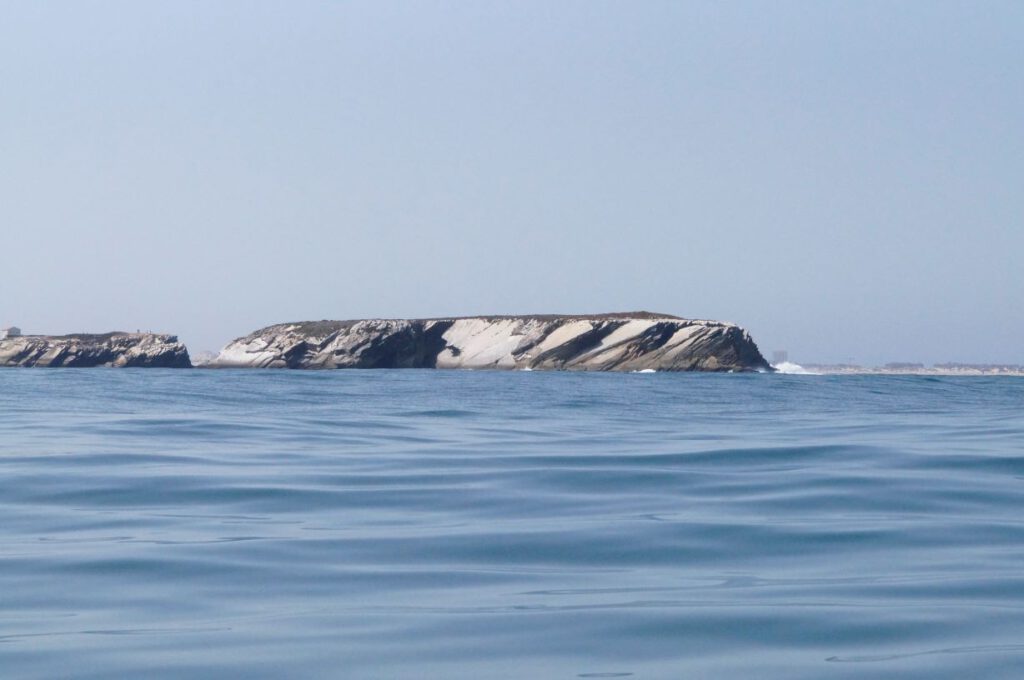
As usual, I drove close to the coastline and therefore close to the rocks.
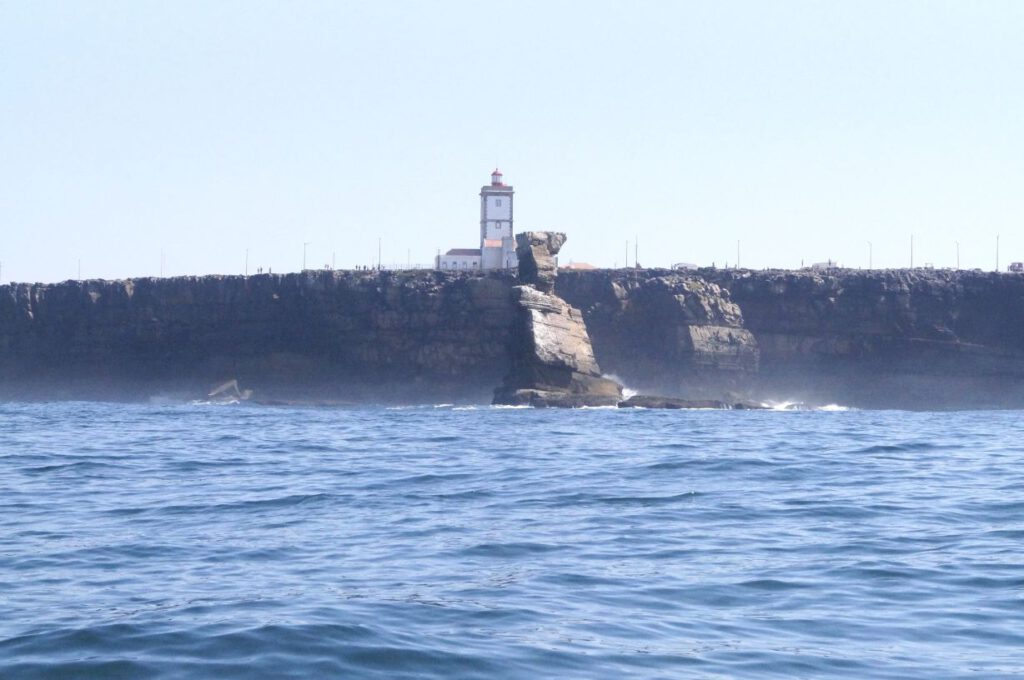
The Cabo Carvoeiro near Peniche. I passed on longitude 9°24.89’W, which is further west than Spain’s western tip Finisterra. Peniche is the most westerly place and port in continental Europe anyway. I stayed in Peniche for one day, actually I wanted to stay longer. But there was no sheltered berth for me, I had to moor on the outside of the pontoon, the swell in this harbour is heavy, sleeping was hardly possible. So there are only a few impressions from the immediate surroundings.
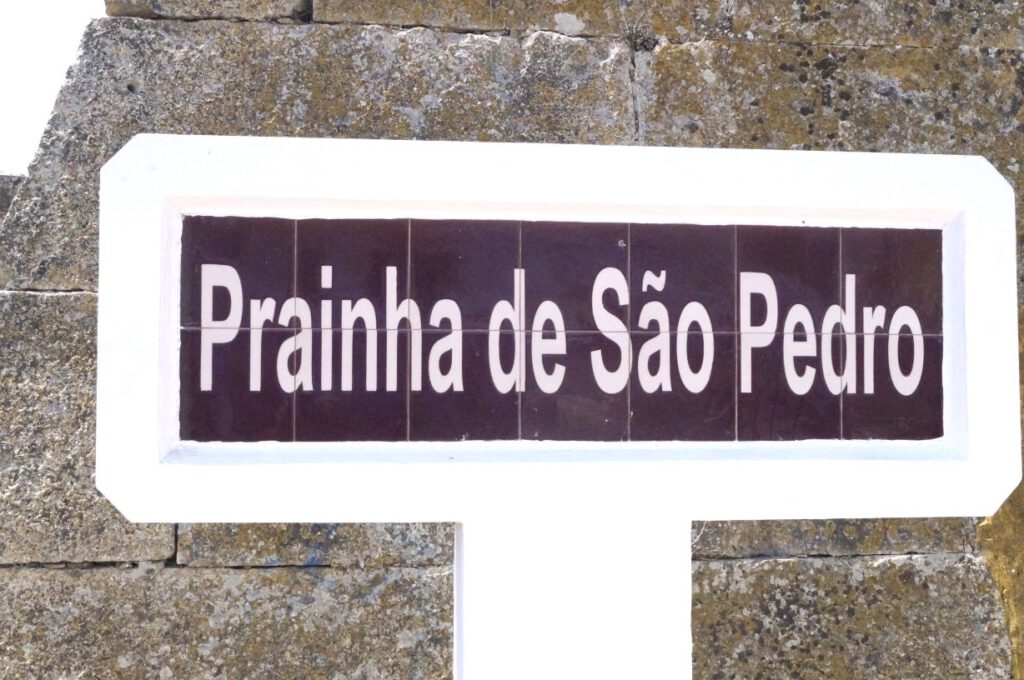
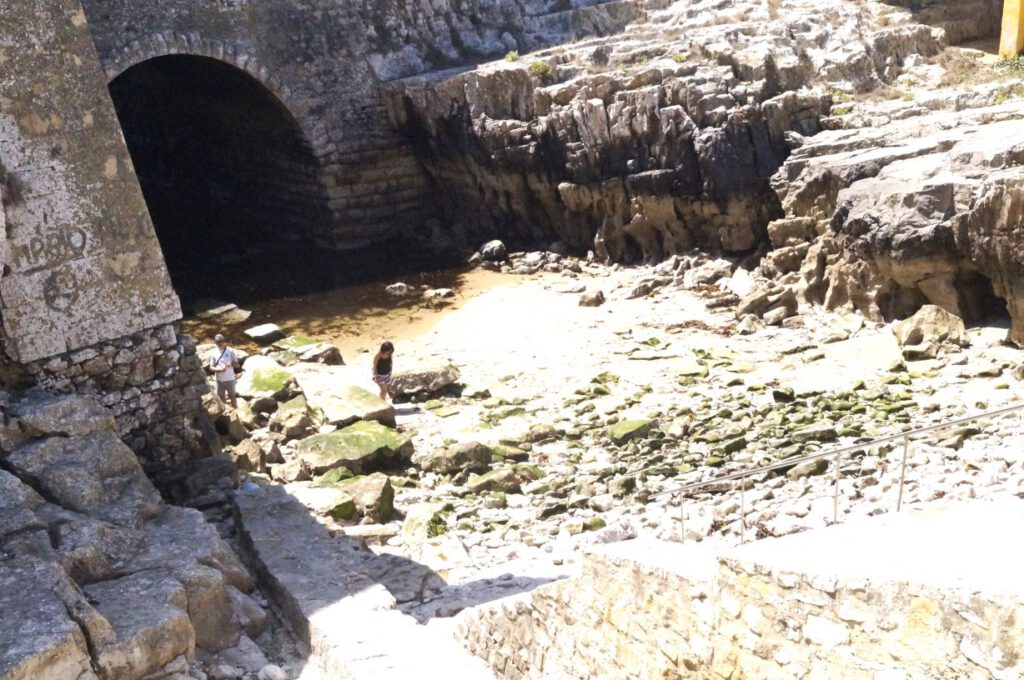
An adventurous beach
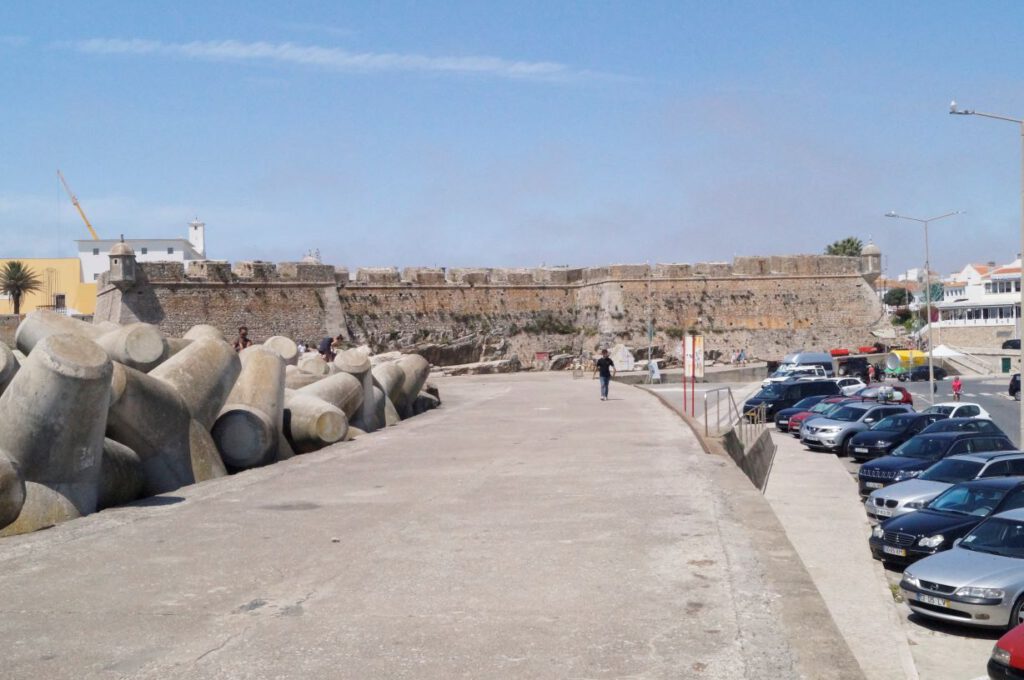
below the fort. Probably this was just a dropout-gate in the past.
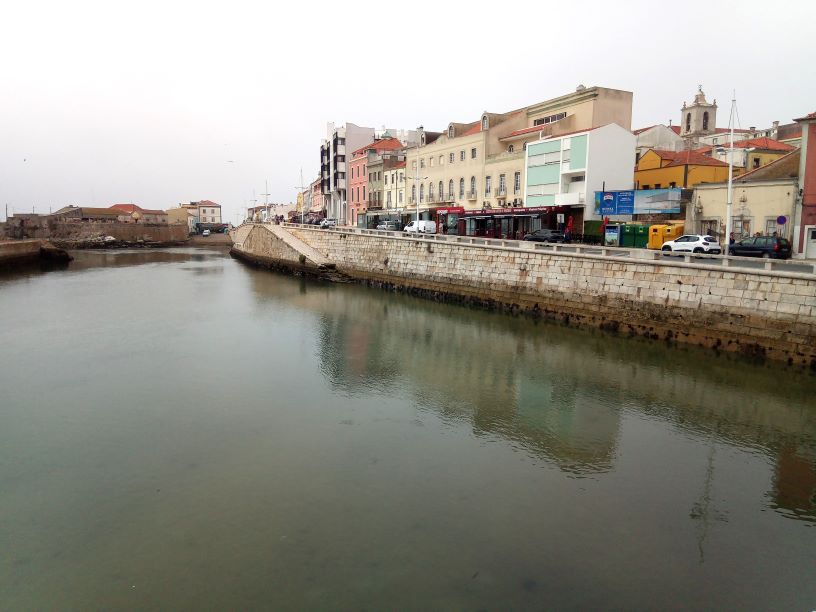
The harbour mile at the old harbour, which is no longer accessible.
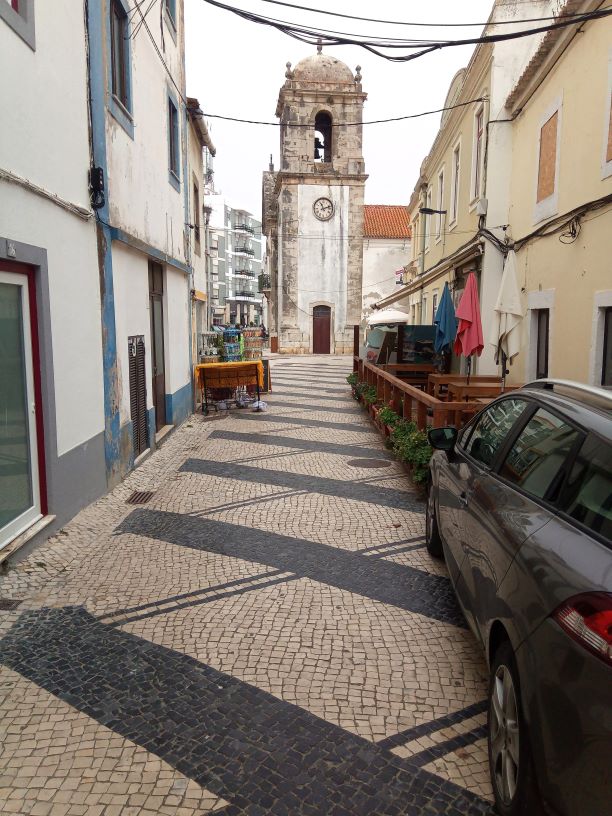
A small alley with an old, poorly maintained church. However, a beautiful place.
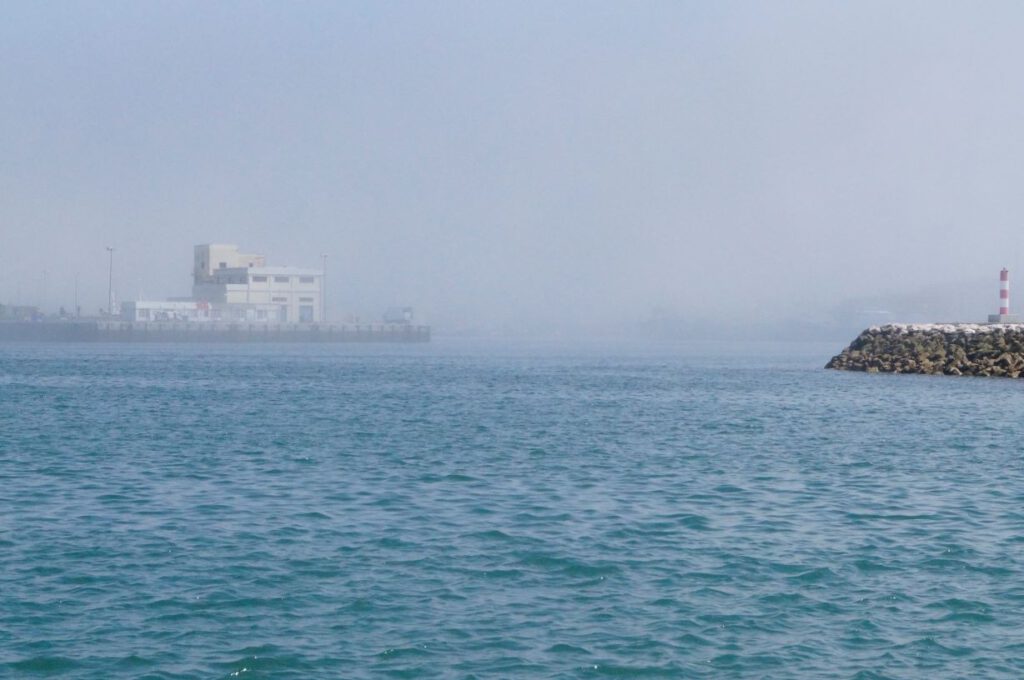
Peniche on the second day in the fog.
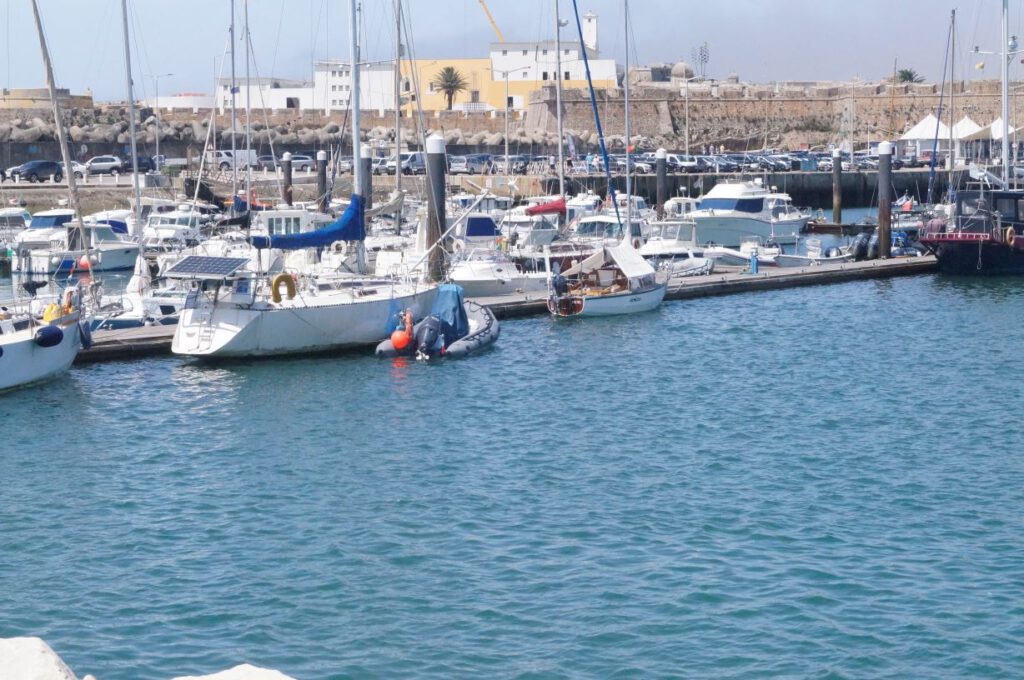
amica on the outside of the pontoon, in the large harbour basin, without fog.
The longer trip to Cascais made me leave at 7 am and …. of course no wind again. Around 10 a.m. I set the mainsail to protect myself from the sun, but it didn’t help for sailing at that point.
On the way to the last point, Praia das Maças. Slowly, a NW with up to 8 knots set in. As a precaution, I changed from main to jib, because the wind was coming from astern. I had been warned about the south side of this cap, where strong gusts were supposed to come down from Cabo da Roca.
The westernmost point of continental Europe, Cabo da Roca, amica reached longitude 9° 30.5′. The Romans were probably not here (no finis terrae), because today this point is officially designated as the place where Europe ends. From now on, the route heads east again, well, and quite a bit south.
Shortly after the point, the wind freshened from 8 knots to over 25 knots. After I saw the forestay coming a bit loose due to the pressure in the jib (only 10 square metres!), I recovered it in a lightning action. Just under top and rig, I was still on 4 knots! Nevertheless, I put the engine on to help me get safely around Cabo Raso. Shortly after rounding the Cabo, the wind decreasing extremely. In sight of Cascais there was a lull again.
Cascais is known for being extremely expensive, and I knew I would have to sail 5 nautical miles further to Oeiras the next day. Besides, everything here in Cascais was a bit too big for me and the place wasn’t very nice either, everything was very touristy, pubs and restaurants without end. If you like it that way, please, I like it more manageable. And this is how it is in Oeiras.
6 September 2023
Parque das Nacões
A few days ago I set off on the last trip to Lisbon, it’s not supposed to be warm there any more, that is, not over 30 degrees. I’m going to leave the boat here for a while to take a holiday from life on board with Barbara. The harbour is wonderfully suitable for this, well guarded and well protected, and the price is okay. Therefore, I booked myself in for a month. It’s not clear whether I’ll stay that long, but three weeks for sure.
The tour to the Marina Parque das Nacões went along Lisbon’s south coast. Lisbon looks very beautiful from the water.
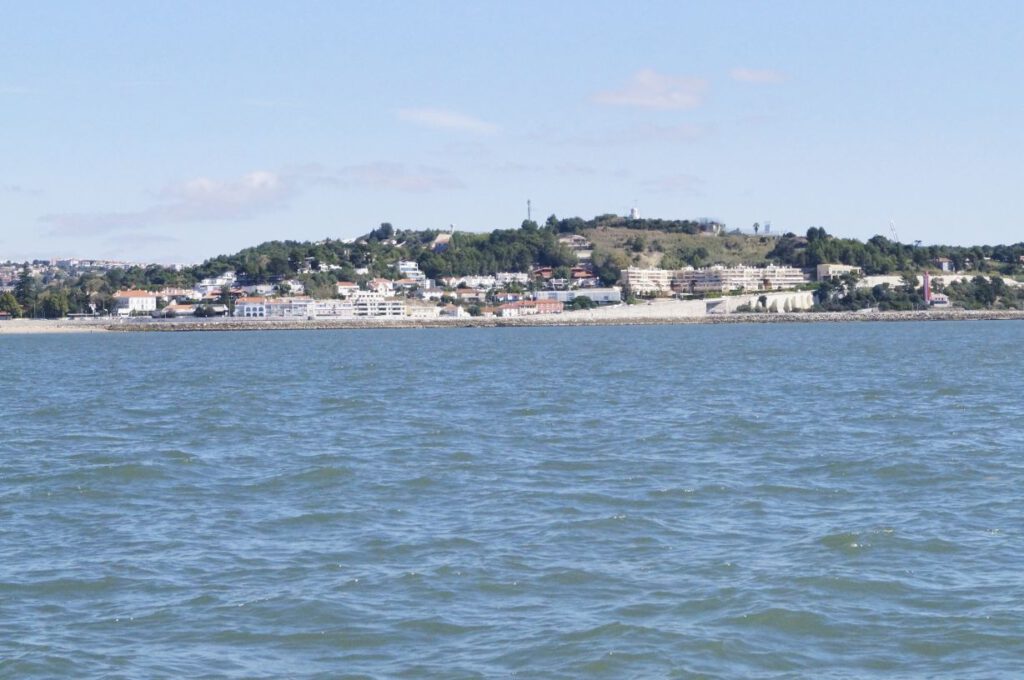
A last view of Oeiras
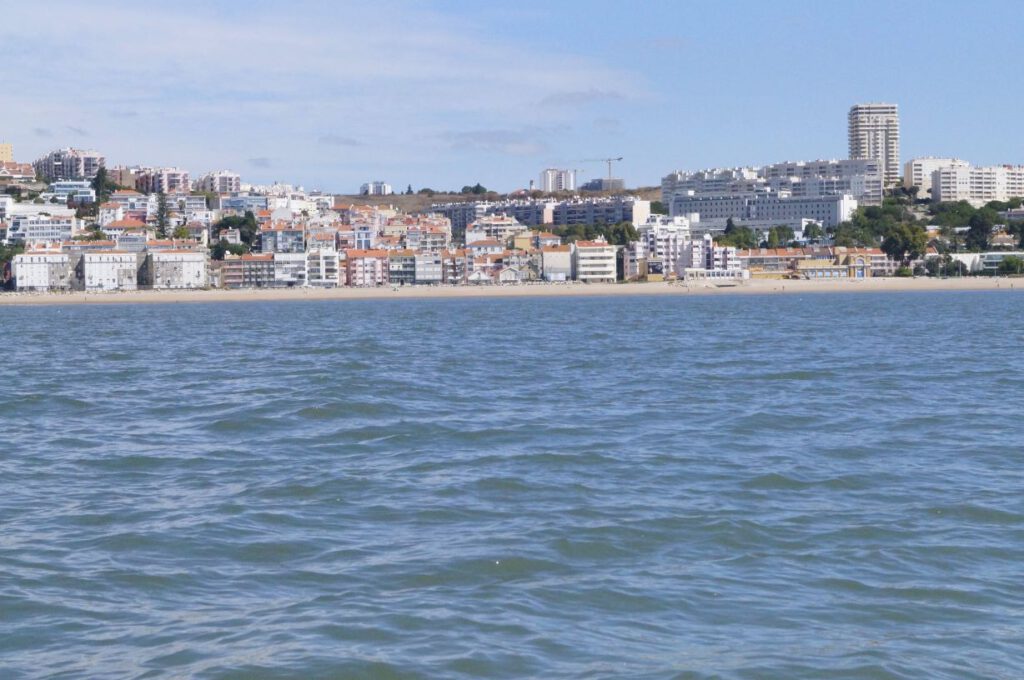
City Beaches in Lisbon
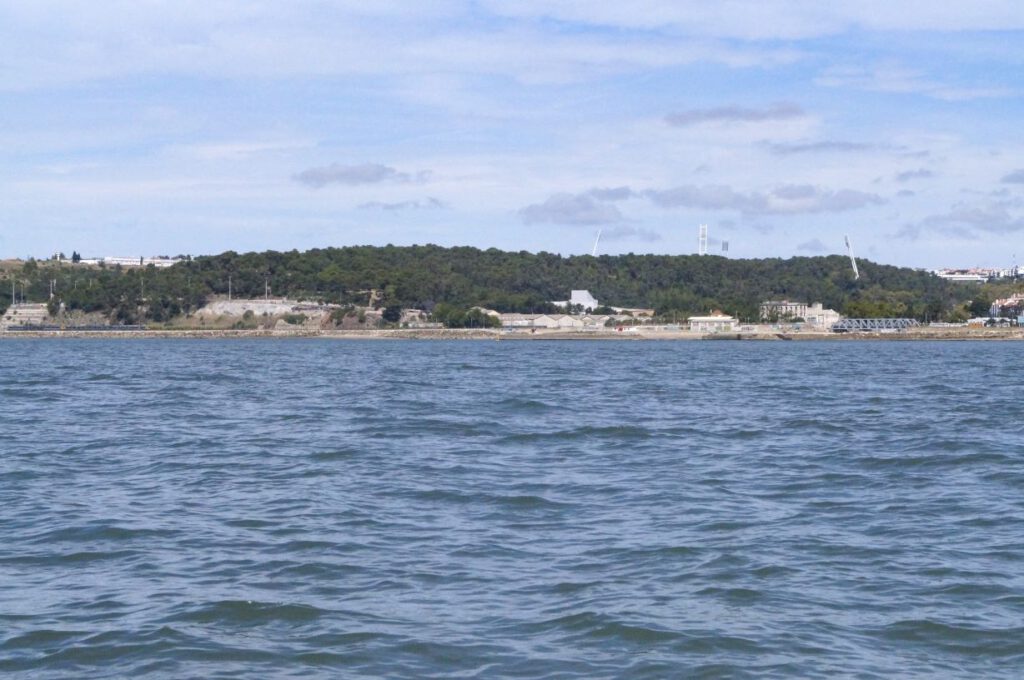
Estádio Nacional do Jamor, an ageing football stadium. Inaugurated under Salazar, it is too small for today’s standards, with room for only 36 000 spectators.
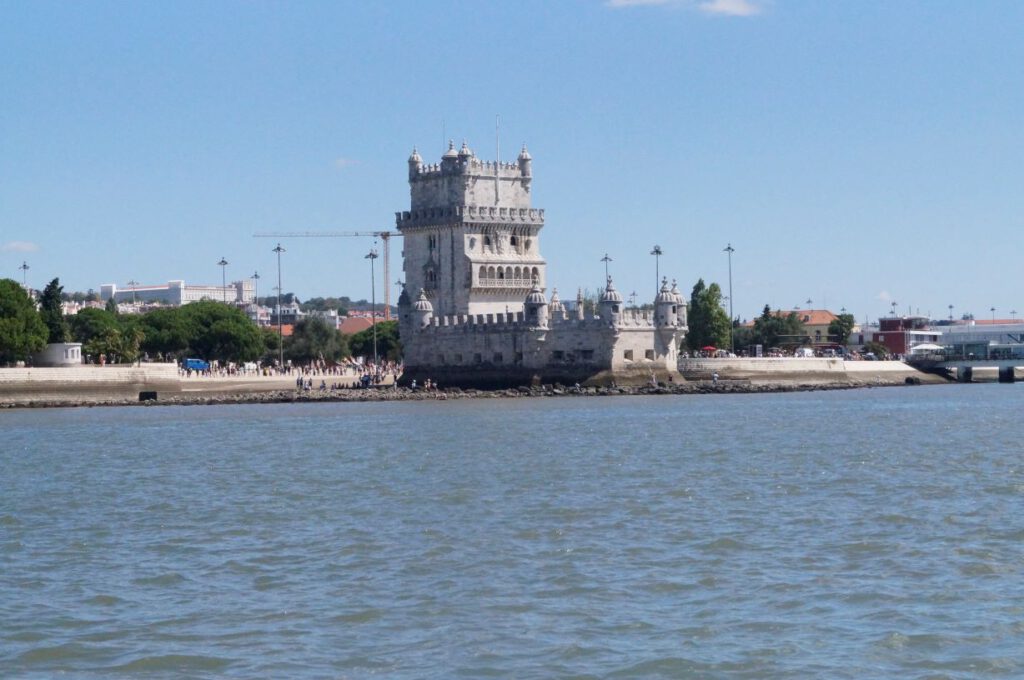
At the Torre de Belem, look at the queue of people.
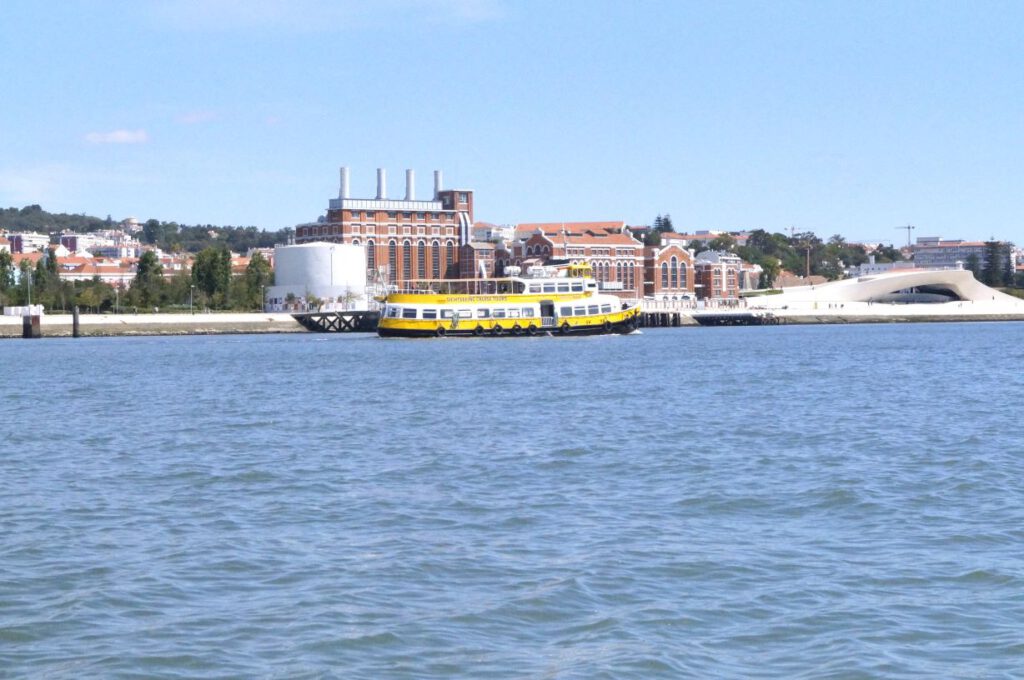
And this ferry? Those of us from Hamburg who are a little older know these steamships, as they operated as HADAG ferries in Hamburg until the 1970s.
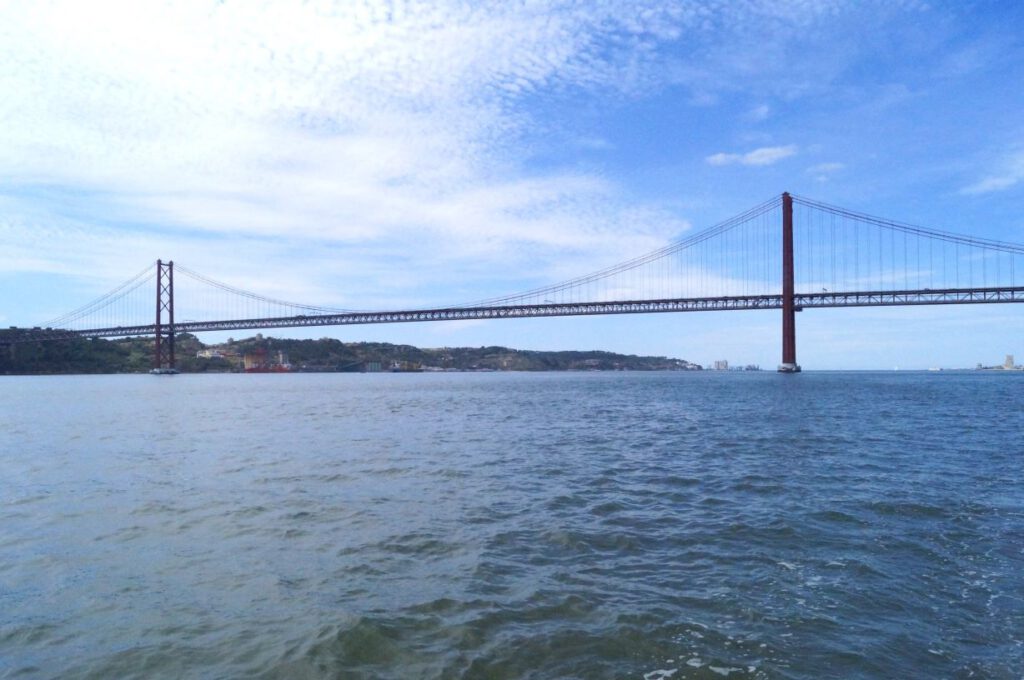
The Ponte 25 de Abril. Until there I could sail, after the bridge there were winds from different directions or no wind at all. But the good current carried me quickly the last nautical miles to the harbour.
A few impressions of the Parque das Nacões district, which was created by Expo 1998: modern Portugal, albeit without traditional building styles. Somehow, it still seems Portuguese to me, which may be due to the recurring yellow colour and the filigree structure. Well, the theme of the Expo was a Portugal-related theme anyway, but actually for all of us: The Oceans: A Legacy for the Future.
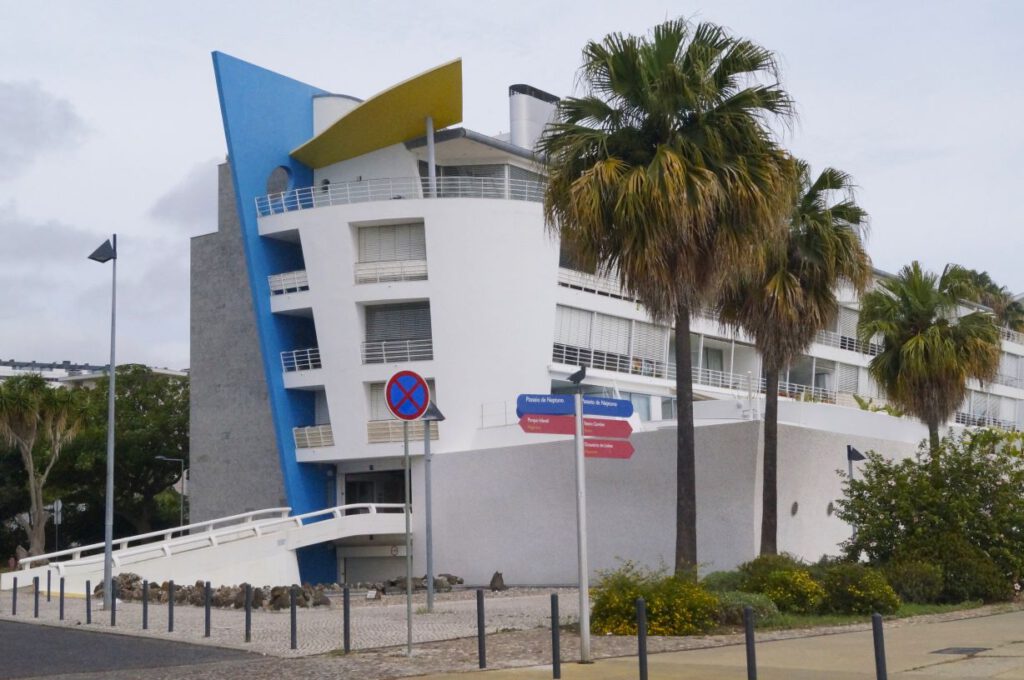
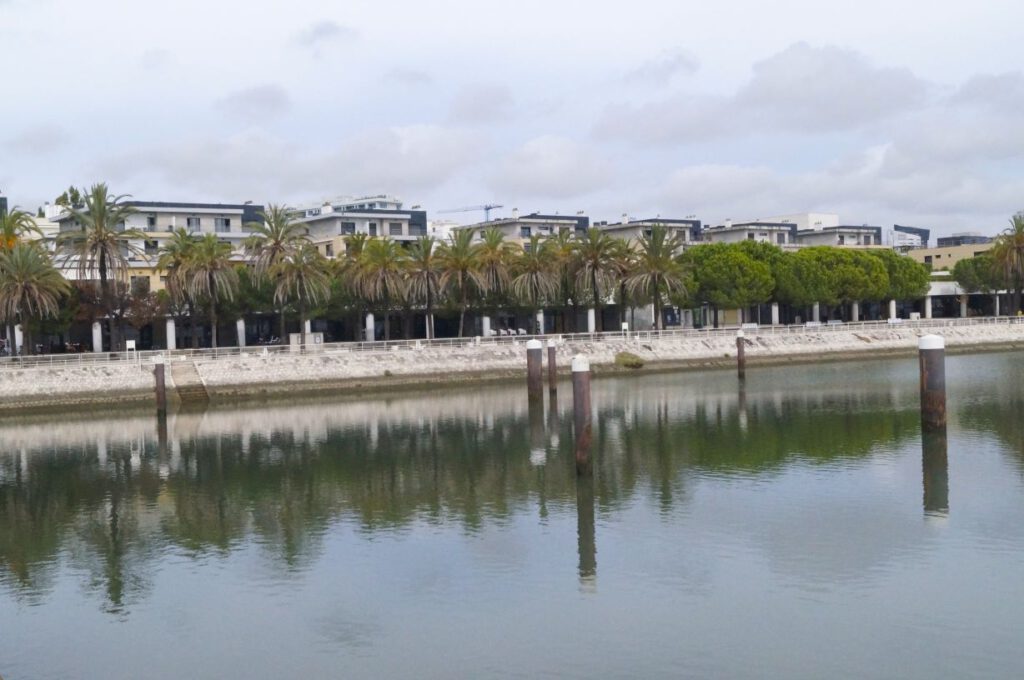
Architecture
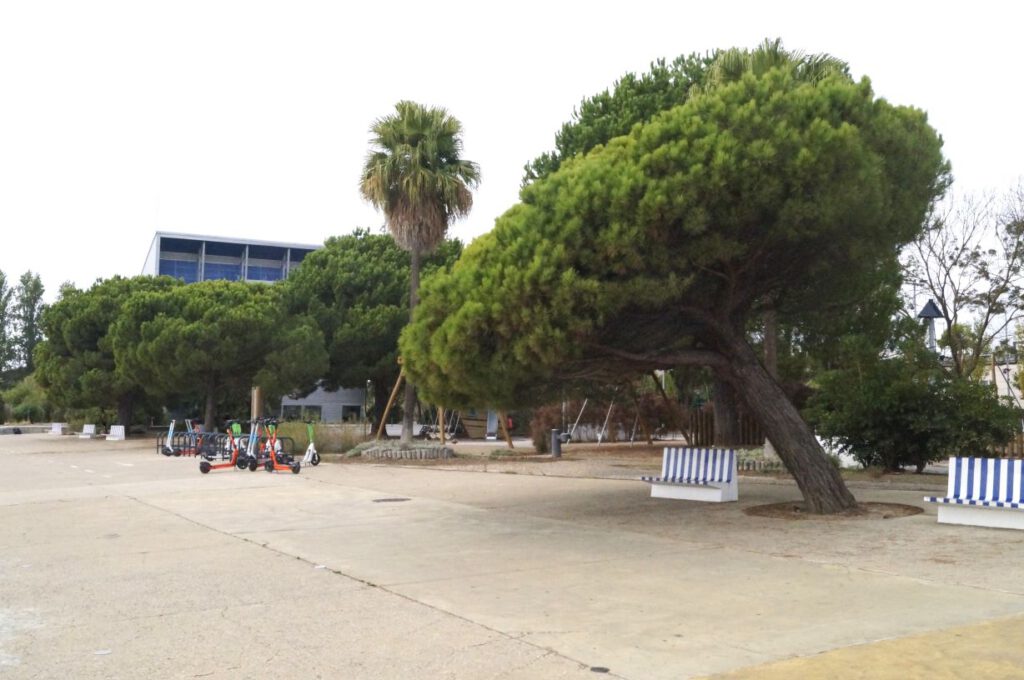
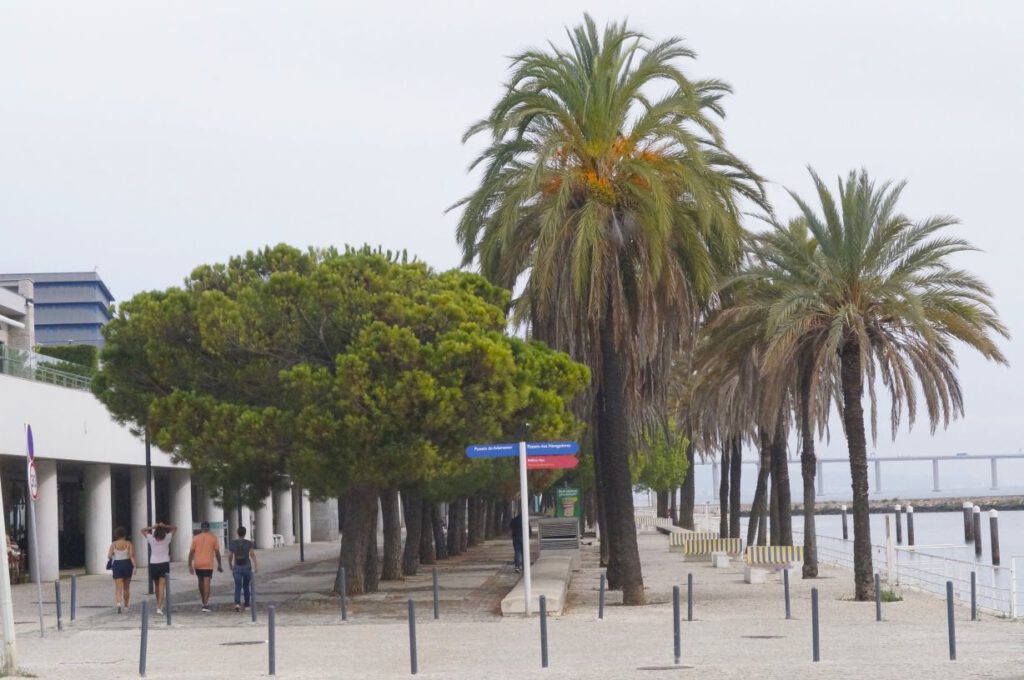
Plants, grown tall
Now I’m taking a break from sailing and life on board. We continue under the menu item: Portugal de Sud
